- Details
- Hits: 3645
Pioneering Women
|
|
|
Here is some splendid stuff from Mary Bertha de Bunsen in 1934, from an article called 'Practical Flying for Women': |
|
| "When present-day landing problems are simplified, the lady owner-pilot upon her daily shopping and visiting rounds is likely to flourish as does her counterpart upon the roads." |
Mary Bertha de Bunsen in 1932, aged 22. |
|
An accomplished aviator in her own right, Mary was born 29 May 1910 in Madrid, the daughter of Sir Maurice, the British Ambassador there. She had been dragged round dances and hunt balls by her parents in the hope of finding her a suitable husband - these were, of course, in short supply after the carnage of WWI. "I was far too innocent to realise... that with a lame leg [after a childhood attack of polio] and horn-rimmed glasses I stood no chance whatever". She never married, and died in 1982 in Dorset. |
|
|
"An owner-pilot, Mrs Hamilton-Gault, has with her husband travelled England and the Continent for four years in a Moth rejoicing in the registration letters 'G-AAGA'. She is an example of the practical lady pilot whose aeroplane is used, when weather permits, for all travelling in England and abroad. Once a week or more, in summer, she flies to London and back to her home in Somerset. She is, however, forced to use the aerodrome at Yeovil - some distance from her home - owing to the lack of landing grounds in the Somerset Hills, which keeps a number of air-minded people in the county from taking up flying." |
Lady G-AAGA (actually, Dorothy Hamilton Gault. That was a joke) see also here for more on her interesting husband, Andrew Hamilton Gault! |
| "...Another lady aeroplane owner, Miss Giles, who has flown several hundred hours, regarded her flying until the last two years more as a sport than a practical means of transport. Now that the number of aerodromes has increased, she is, however, usually able to insist that she will come to the nearest aerodrome, from whence her friends must fetch her." |
Joanna Elder Giles |
|
Elise Battye |
"On an income of £1,000 a year, Mrs Elise Battye keeps a small house within thirty miles of London, a Morris Minor as an essential adjunct to the scheme, and a Moth aeroplane. In the latter she flies 180 to 200 hours a year for under £250 all told. She flies constantly to the Isle of Wight, Gloucestershire and Norfolk - to the last two as many as three times a month - and all these places are unpleasant to get to by any other means." [this is still true, of course] [The average salary in 1934 was somewhat less than £200 a year] |
|
Adelaide Cleaver |
"Mrs Spencer Cleaver makes the usually fatiguing journey to Northern Ireland three or four times a year in her own aeroplane, and, fitted with extra tanks to save refuelling during the day, it has many times enabled her to breakfast in London, shop in Paris from 11 to 1, and return in plenty of time for dinner at her house in London." [see here for more about Adelaide] |
|
Meanwhile, down-to-earth Pauline Gower, who was traipsing about the country with her engineer friend Dorothy Spicer making a living from joyriding, thought that flying "is the best antidote to the manifold neuroses which beset modern women, usually because they have too little to occupy their minds."
Pioneer British LadiesHere's an interesting chart (honest) - it shows the number of Aviator's Certificates issued by the Royal Aero Club each year, from 1911 to 1934, to men and women:
The numbers, in case you ever need them, are:
apart from the fact that hardly anybody (apart from those in the armed services, presumably) learnt to fly for about 6 years after WWI, this means:
On May 26th, 1932, after her solo flight from America, Amelia Earhart was the guest of the Royal Aero Club in London, and amongst the ladies in attendance were Lady Bailey, Amy Johnson, and Winifred Spooner (less than a year before her untimely death).
WHY MISS EARHART FLEW ALONE: 'WOMEN HAVE THE COURAGE TO MAKE RECORDS'. Miss Earhart spent a busy day in London yesterday. In the morning she went shopping, attended the Institute of Journalists' luncheon in the afternoon, and finally gave an interview to journalists. Replying to questions, she said: 'I had made up my mind to fly alone, because if there is a man in the machine you can bet your life he wants to take control. Well, I had already flown the Atlantic with men in control, and I was determined that if I did it again was the one who was going to control the machine'. Miss Earhart expressed the opinion that women had a greater capacity for physical endurance than men, and'with aeroplanes developed to such state of efficiency many of them plunged in where a man would hesitate. Miss Peggy Salaman is to have tea at the American Embassy to-day with Miss Earhart and her hostess Mrs. Bruce, the Ambassador's daughter. Miss Earhart said that her flight had added little to aviation 'because, after all, the Atlantic has been crossed many times. The trip was merely a personal satisfaction to me.' (Western Morning News - Tuesday 24 May 1932) "MISS EARHART CREATES ANOTHER RECORD. Miss Amelia Earliart, the heroine of the latest Atlantic flight, met two of Britain's great flyers, Mr J A. Mollison and Miss Amy Johnson, London, yesterday. She was entertained at lunch by the Committee of the Royal Aero Club, and after lunch a reception was held which Miss Earhart answered questions put by members of the club. Lord Gorell, introducing Miss Earhart, said that this was the first time that women had been admitted to the club. The Committee had felt that an air record having been created, one should also be set on land." (Western Daily Press - Friday 27 May 1932)
Rear: Lord Gorell, ?? Front: Lady Bailey, Amelia Earhart, Amy Johnson, Winifred Spooner "MISS AMELIA EARHART (Mrs. G. P. Putnam) was the guest of honour at a reception held at the Royal Aero Club on Thursday last, May 26. Miss Earhart was introduced to the members by the President of the Club, Lord Gorell, and in answer to questions she informed them that her altimeter ceased working soon after she left Harbour Grace. When she came near the Irish coast, therefore, she did not think it advisable to go straight over the southern end, as her maps did not allow her to gather the height accurately. Moreover, she was at that time flying in very thick, thunder-stormy weather, with bad visibility. She therefore went up the coast some way until it was clearer, where she found a railway. This she followed in the hopes that it would lead her to a large town where she, being American, naturally expected to find an airport. As it was Ireland she was flying over, she was disappointed, and on finding Londonderry she flew round until she found a field of suitable size into which she could land her "Vega" She said that she did not make any allowance for the wind during the trip as she was flying a great circle course over which the effect of the wind balanced itself out, as during the first part the drift was southerly and during the second part northerly. For her direction, as she had to fly "blind" from 11.30 p.m. till dawn, she relied largely upon her directional gyro, and checked this by her two magnetic compasses. Present at the reception were also many English lady pilots, including Lady Bailey, Miss Amy Johnson and Miss Winifred Spooner." (Flight) After the outbreak of WWII, Mary Bertha de Bunsen joined the Air Transport Auxiliary. The ATA performed an essential role throughout WWII, delivering aircraft from factories and maintenance units to airfields; the women's section was assembled and led by Pauline Gower. There were 168 women pilots in the ATA (out of a total of 1,322), plus dozens of women who were trained as pilots. See here for their stories: - Women Pilots - (ata-ferry-pilots.org) Here is a list of the pioneering women (those who took their Royal Aero Club Certificate before 1930) who made this possible. |
|||||||||||||||||||||||||||||||||||||||||||||||||||||||||||||||||||||||||||||||||||||||||||||||||||||||||||||||||||||||||||||||||||||||
- Details
- Hits: 1922
|
Mrs Hilda Beatrice Hewlett Royal Aero Club Certificate No. 122 (29 Aug 1911) |
||
|
|
.jpg) |
|
|
Wow, nice... ummm... what is that exactly? b. Hilda Beatrice Bird, 17 Feb 1874 in Vauxhall, London; married novelist Maurice Hewlett. Created and ran the first flying school in the UK, and then a successful aircraft manufacturing business with Gustav Blondeau. Her 20-year-old son Francis got his RAeC certificate shortly after she did (No 156). He later became an Air Commodore. Emigrated to New Zealand (to get away from "crowds, convention and civilization") and died there 21 Aug 1943. See Hewlett, Gail (2010) 'Old Bird - The Irrepressible Mrs Hewlett' (Troubadour Publishing Ltd, Leicester, ISBN 978 1848763 371) First British Woman to hold an RAeC Certificate. |
||
- Details
- Hits: 1836
|
Mrs Cheridah Anne de Beauvoir Stocks Royal Aero Club Certificate No. 153 (7 Nov 1911) |
||
|
|
.jpg) |
|
|
RAeC Certificate No 153 - 7 Nov 1911
b. Somerset; youngest daughter of Major Ernst, D.L., J.P. of Westombe, Evercreech. In September 1913, she and Sydney Pickles (
It looks like she was amongst the dozens of women who signed a 'Plea for a Constitutional Decision' in 1917 against immediately giving women the vote - suggesting that a decision should be postponed until after the war. "A considerable number of women do not desire the vote", they reckoned. It might have been another Mrs Stocks, of course... After WWII, Cheridah studied for a BSc at Oxford and travelled the world. Her husband, Commander David de Beavoir Stocks D.S.O. Legion of Honour, died 31st January 1918 in a submarine. d. 1st May 1971 in Northampton aged 84 after a long illness; the Times said that she was "a most beautiful woman and her vivacious character and her exploits won her much popularity". 2nd British woman to get an RAeC Certificate: |
||
- Details
- Hits: 1969
|
Mrs Winnie Buller F.A.I. Certificate No 848 in May 1912 |
||
 |
 RAeC RAeC |
|
|
b. Norfolk but got her aviator's certificate from the French F.A.I. by which time I trust her hair was dry, although she seems to have forgotten to plug it in. |
||
- Details
- Hits: 2069
|
Mrs Cicely Ethel Wilkinson Royal Aero Club Certificate No. 3522 (11 Sep 1916) |
||
|
|
||
|
Her Wikipedia entry is here: https://en.wikipedia.org/wiki/Cicely_Ethel_Wilkinson |
||
- Details
- Hits: 1794
|
Miss Hilda Hope McMaugh Royal Aero Club Certificate No. 7818 (15 Nov 1919) |
||
|
|
.jpg) |
|
|
b. 11 Mar 1891 in NSW, Australia; a nursing sister with the Australian Army Nursing Service. photos: 1919, aged 28 See the movie here 4th woman to get an RAec Certificate (No 7818) on 15 Nov 1919 |
||
- Details
- Hits: 4575
|
|||||||||||
- Details
- Hits: 1911
|
Imelda Mary Agnes Trafford Royal Aero Club Certificate No. 7879 (24 Jun 1920) |
||
|
|
||
|
b. London killed 25 September 1920; passenger in G-EAPC, a Central Centaur IIA twin-engined plane which crashed at Hayes, Middlesex, killing her, the pilot Mr Castleman, and five others. |
||
- Details
- Hits: 2884
|
The Hon. Elsie Mackay (a.k.a. Poppy Wyndham) Royal Aero Club Certificate No. 7930 (14 Aug 1922) |
||
|
|
||
|
b. Simla, India, in 1893, the third daughter (of four, plus one son) of Lord and Lady Inchcape; the "friendly, sociable and unpretentious" Miss Elsie from Glenapp Castle in south-west Scotland. One of the richest women in Britain, and therefore a member of the Court and Social whirl: e.g. aged 19 or so, she was at Mrs Tennyson d'Eyencourt's dance in 1912: "The drawing room in which the dancing took place was decorated with tulips in different shades of yellow" and all that. Became a nurse in her mother's hospital for wounded soldiers (this is all sounding a bit Downton Abbey, sorry) and in 1917 nursed a certain wounded South African soldier Mr Dennis Wyndham, in civilian life An Actor. She told her father she wanted to marry him; Daddy strongly opposed the marriage; they ran away to Glasgow (Glasgow??), took apartments and got her landlady and someone else to act as witnesses; went to the registrar... hang on, this is Downton Abbey! Unfortunately for them, they hadn't been resident in Scotland for the required 15 days, and the marriage was declared null and void. The judge was very put out... "This sort of thing will not do. People must realise this is a solemn act dealing with the question of marriage and the future of a man and woman... I am going to report the whole of this matter to the Lord Advocate". Elsie reverted to her maiden name, went back to the family home and to the endless balls, dinner-parties, at-homes, receptions, hospital ward-openings, society weddings and cruises. "Miss Mackay wore a Victorian picture dress of pink and gold brocade over an underskirt of silver lace"... She became quite a well-known interior designer for P&O. Lord Inchcape was chairman of P&O but that was just a coincidence, probably. Meanwhile ... in April 1920 a certain Miss Poppy Wyndham appeared in a horsey silent picture movie called 'A Dead Certainty' ... June 1920, Poppy Wyndham (again on a horse) in "A Great Coup" ... August 1921, Poppy Wyndham in "A Tidal Wave". As 'Poppy', Elsie appeared in at least 8 movies between 1919 and 1921. In June 1924, Elsie sold programmes at a charity matinee at the Aldwych Theatre; the following month, presided at the Catholic Stage Guild, and in June 1926, she sold "sweets and programmes under Lady Alexander's direction" at another charity matinee. On the 9th March 1928, she denied rumours that she was going to accompany one-eyed Imperial Airways pilot Captain Walter George Raymond Hinchliffe on a transatlantic flight; she knew him, of course, but only had "a very small financial interest in [his flight]". Sure enough, on March 14th, the black and gold Stinson-Detroiter aeroplane 'The Endeavour', containing Capt Hinchliffe and Elsie Mackay, took off from Cranwell. It was spotted 170 miles off the west coast of Ireland, heading out over the Atlantic. They were never seen again... ...except... 1) a note, found in a bottle at Flint, North Wales, saying "Goodbye all. Elsie Mackay and Captain Hinchcliffe. Down in fog and storm". Pity the handwriting was nothing like Elsie's, and the writer spelt Hinchliffe's name wrong, but anyway... 2) A London spiritualist received a message from the dead Mr Hinchliffe in July: "We landed on the water. We did not crash ... I swam for 20 minutes but the currents were too strong and I became unconscious and drowned. Mackay's end was peaceful". I only report this stuff... 3) Finally, in December an identifiable wheel from the aircraft was found washed up in Ireland (which rather settled it). Lord and Lady Inchcape generously put Elsie's £521,101 13s 4d in trust for the nation for about 50 years, after which time they hoped it "should be used to reduce the National Debt". They also gave Capt Hinchliffe's widow Emilie (sometimes known as Eileen) £10,000, his estate being a rather more modest £32. In 1977, when the Elsie Mackay Fund matured, it had grown to over £4.5 million; the National Debt had also grown a bit, however. To £66.8 billion. Or, to put it another way, just another 99.993% to go ... See also:http://www.elsie-mackay.co.uk/ and 'A Flight Too Far', by Jack Hunter/Stranraer and District Local History Trust, 2008. There is a memorial window to Elsie in Glenapp Church. [p.s. this is not the same actress, called Elsie Mackay, who was married to actor Lionel Atwill; she was American] Elsie owned a 1916 Airco DH.6 (C5220, G-EAGF) |
||
- Details
- Hits: 2534
|
Sophie Elliott-Lynn / Lady Mary Heath Royal Aero Club Certificate No. 7975 (4 Nov 1925) |
||
|
|
Lady Heath at Roehampton |
|
|
b. Sophie Catherine Theresa Mary Pierce-Evans on 10th November 1896 in Knockaderry, Co Limerick, Ireland; her crazed father beat her mother to death (with a stick) and was jailed for life, so she was brought up by her aunts. A well-known, courageous, determined and forceful sportswoman, an athletic 6-foot tall Irishwoman 'never averse to publicity' (which earned her the nickname 'Lady Hell-of-a-Din') who was elected World Champion Lady Aviator by the USA. At Stag Lane in 1926, Mrs Elliott-Lynn formed a small group owning a pale blue Moth, but was also the "somewhat erratic" pilot of an S.E.5... ...which she crashed a year later at Brooklands. In the same year, when Lady Bailey and Mrs Geoffrey de Havilland hit the headlines with a world record climb to 17,283 ft, Avro countered with Mrs Elliott-Lynn climbing to 19,200 and making a 1,300-mile trip in a single day, during which she made 79 landings. Then, her first husband Major Elliott-Lynn having died off, Sophie married Sir James Heath, Baronet, and thereby became Lady Heath. "Lady Heath stepped from her tiny aeroplane at Le Bourget after her long flight from the Cape in May 1928, as fresh as a daisy. 'It is so safe that a woman can fly across Africa wearing a Parisian frock and keeping her nose powdered all day.' This was the first solo flight from any overseas Dominion to Britain, and she was the first woman to pilot an aeroplane from Cape Town to London. Unfortunately, Sophie was not very good with Sir James' money; she was rather too easily persuaded to "buy a lot of things" and send him the bill. Having given her £20,000 as a marriage settlement and bought her an aeroplane, he was eventually obliged to take out a note in the newspapers forbidding her to "pledge his credit". The marriage was dissolved in 1932. Having fled to America, Sophie finally became plain Mrs Williams; he was an airman from Kentucky. d. 9 May 1939, aged 42, in London when she fell down the stairs of a tramcar. She left £204. Sophie owned, at various times:
|
||
- Details
- Hits: 1905
|
Sicele Julia Mary Annette O'Brien Royal Aero Club Certificate No. 8045 (20 Oct 1926) |
||
|
|
||
|
b. 1 Apr 1887 in London [or Limerick?], daughter of Sir Timothy O'Brien, a well-known cricketer (it says here). She was an ambulance driver during WWI, and later a tennis player. In 1927, the second woman to get a 'B' [Commercial] Licence. Supposedly, her parents were against her taking flying lessons, and the first they heard about it was when they saw a newspaper report. Lost a leg in a crash (onto a golf course in Mill Hill, interrupting a four-ball match) a year later, but continued with an artificial limb."It was worth it", she said, "One has to take risks for anything that is worth while". With Lady Heath, set a British altitude record of 13,400 ft in 1928.
l to r: Sicele, the Hon Miss Leath, Mr Cords, Mr Cooke, Lady Heath and her secretary. Killed 18 June 1931 aged 44 in her Blackburn Bluebird III G-AABF, which crashed when taking off at Hatfield. Sicele owned: a 1926 DH.60 Moth (G-EBOS) (the aeroplane which she crashed onto a golf course in Mill Hill), and a 1928 Blackburn L.1B Bluebird III G-AABF (which is the aeroplane in which she and co-owner Enid Merlin Gordon Gallien were killed). |
||
- Details
- Hits: 1669
|
Doreen Vionee Ranald Royal Aero Club Certificate No. 8066 & 17053 (24 Jan 1927) |
||
|
|
||
|
b. Semastipor, India, 8 Feb 1907 Wife of Lieut. Ranald, R.N.; in September 1937 the Hampshire Aeroplane Club reported that "We had a visit on Sunday, the 21st, of Lieut. Ranald, R.N., and Mrs. Ranald. Mrs. Ranald holds the Royal Aero Club certificate and has now joined this club for the purpose of obtaining her "B" licence." "We are always happy to receive visits from the members of any of the clubs."
|
||
- Details
- Hits: 3999
|
Hon. Lady Mary Bailey Royal Aero Club Certificate No. 8067 (26 Jan 1927) |
|
 1927, aged 37 1927, aged 37 |
1930, aged 40 |
|
The Hon. Mary Westenra, b. 1 December 1890 in London but brought up mainly in County Monaghan, Ireland. Her family's home was Rossmore Castle, which was a grand affair built in the 1820s, with turrets, a vast drawing room and servants' quarters, not to mention about 20 cottages on the estate:
Here she is, with her brother Willie, and parents (Mittie and Derry) on a set of steps by the house, in 1913:
I visited County Monaghan in 2014 and asked in the local museum if they knew where the house was. 'Oh yes' they said, 'but it was demolished forty years ago'. It seems that it became severely infested with dry rot in the 1940s, was abandoned and, indeed, demolished in 1975. Anyway, here's all that's left of it now:
Mary married South African mining magnate and white suprematist politician Sir Abe Bailey in September 1911 (so, she was 21, he was nearly 47; his first wife had died in 1902 and he already had two children). They then had five more children - 2 boys and 3 girls. She learnt to fly at the London Aeroplane Club in 1926. She was the first woman to fly across the Irish Sea 'by the long route' from Chester to Dublin, the following August. The following March (1928) she began a solo tour to Cape Town, via Malta and then Cairo. Here, her plane was locked away by order of the Governor-General of the Sudan to prevent her from continuing alone, so she contacted Dick Bentley (who had flown to the Cape a few weeks before) to escort her in his own aeroplane over the "dangerous area of the southern Sudan". She then crashed in Tanganyika, writing off her aeroplane (she said it was her fault), but Abe made arrangements for a replacement Moth to be delivered from Pretoria and she continued, despite having 'flu. Abe was there to meet her when she arrived at the end of April. The return journey was made via the western 'French' route - the Belgian Congo, Angola and the French Congo. She finally arrived back at Croydon on 16 January, 1929, 10 months after she left. It was "undoubtedly one of the finest performances ever put up by a woman pilot." Lady Bailey was "so modest, so vague and so charming", and was "surprised that anyone should make a fuss about her journey". A Director of National Flying Services in 1929, (with Frederick Guest, Colonel the Master of Sempill, Alan Cobham, etc); she was also awarded the Brittania Trophy by the Royal Aero Club, and then made a Dame of the British Empire in 1930 for "services to aviation".
At the Chateau d'Ardennes in 1930

She was a guest at Amelia Earhart's reception at the Royal Aero Club in May 1932.
In early 1933 she gave everyone a scare by disappearing for several days on another solo flight to Cape Town; thankfully, she had only got lost, run low on fuel and landed safely in the Sahara. [Bert Hinkler, who disappeared at about the same time, was killed in the Alps]. She then flew back to England and almost immediately went down with a bout of typhoid, but recovered in time to compete in the King's Cup later in the year.
After that, she concentrated on looking after their horses, giving and attending loads more balls and receptions, and marrying off their many children. When Abe died in 1940, she settled near Cape Town (still keeping a house in Rutland) and died there 29th August 1960 aged 69.
Lady Mary's aeroplanes were: a 1926 DH.60 Moth (G-EBPU), a 1927 DH.60X Moth (G-EBSF, the one she crashed in Tanganyika), the replacement DH.60X Moth (G-EBTG, which Abe bought in Nairobi); a 1928 DH.60G Gipsy Moth (G-AABN); a 1929 DH.60G Gipsy Moth (G-AAEE) and a 1930 DH.80A Puss Moth, G-AAYA.
|
|
- Details
- Hits: 2406
|
Constance Ruth Leathart Royal Aero Club Certificate No. 8085 (18 Mar 1927) |
||
|
|
||
|
b. 7 December 1903 in Low Fell, County Durham; known as 'Connie'. "Five foot three and of generous proportions" (Lettice Curtis);
[Check] "a very experienced pre-war racing pilot and ... looked like George Robey" (Mary du Bunsen). [I'm not so sure this is fair ... here's a picture of George Robey for comparison:
Hmmm...] "One of the first 20 British women pilots to obtain the RAeC certificate" [Amazing - as Connie got her certificate No. 8,085 in 1927, 14 years after the first woman pilot Hilda Hewlett - but true; she was only the 12th woman to get an RAeC certificate]
l to r Edith Chalmers, Adelaide Cleaver, Sir Sefton Brancker, Rosalind Norman and Connie before the start of the 1930 Heston Spring Flying Cruise to Germany In the late 1920s and early 1930s, with Leslie Runciman (q.v.), she ran Cramlington Aircraft, a company which repaired damaged aeroplanes. She also designed and flew her own glider.
Leslie Runciman and Connie (centre) She was educated at Cheltenham Ladies College, and then Ethelburgas School back in Newcastle. By 1939, her mother had moved to Ottery St Mary in Devon, but Connie was still in the north-east, at Morpeth in Northumberland. In December 1939, aged 35, working in the map department at Bristol Airport, she applied to join the Air Transport Auxiliary (ATA). Her experience at the time was over 700 hours, making her one of the most experienced women pilots in the UK, so she started as soon as they could sort themselves out (Pauline Gower was only allowed to take on 8 women to begin with) ... which turned out to be August 1940. She was 'W.13' - the 13th woman pilot taken on by the ATA. Air Transport Auxiliary in WWII --- The Times wrote "She continued flying until 1958 when, reluctantly, she finally disposed of the last of her aeroplanes. Connie Leathart remained a reserved, private person who shunned any form of publicity. In a sense this was a pity as many of her feats went unremarked. In retirement she farmed in Northumberland, where she bred Kyloe cattle [actually, it seems that "she did not breed Kyloe cattle; she did once have a couple of them, but both were bullocks"] and raised sheep. An accomplished horsewoman throughout her life, she continued into her fifties to ride regularly to hounds with the Morpeth and Tynedale hunts. She never married." A friend of hers tells me: "I knew her for the last 20 years of her life, she was my parents' employer and my grandparents' before them. An amazing and eccentric and very kind lady." Died 4 November 1993 in Northumberland, aged 89 ... and John G D 'Jack' Armour (q.v.), who was her first flying instructor in the ATA, was her cousin(!) Connie owned
the 1922 Sopwith Grasshopper (WO 2698, G-EAIN, the only one ever built, which she acquired in 1928), a 1927 DH.60 Moth (G-EBRX, later PH-KLG), a 1929 Westland Widgeon IIIa (WA1776, G-AAJF), and a 1932 Comper Swift, G-ABUU. |
||
- Details
- Hits: 4298
|
Mrs Mary Teston Luis Bell Royal Aero Club Certificate No. 8088 (1 Apr 1927) |
||
|
|
||
|
b. Launceston, Tasmania, 3 Dec 1903 |
||
- Details
- Hits: 3871
|
Miss Winifred Sawley Brown Royal Aero Club Certificate No. 8091 (6 Apr 1927)
|
||||||||
|
b. 26 November 1899 in Brooklands, Cheshire; her father was director of a firm of butchers.
She said she learnt to roll her own cigarettes at the age of five; expelled from school at age fourteen (for writing 'the headmistress can go to hell' on the toilet wall), she made her first flight in 1919 from Blackpool sands.
First woman to win the King’s Cup (in 1930); well known in Lancashire as a hockey player who kept goal for the county and toured Australia with an English team; also a pretty good golfer, sailor and tennis player. To see her being thoroughly embarrassed by her reception back at the Lancs Aero Club after winning the King's Cup, and to hear her say “Thank you for this welcome, it’s awfully good of you and I’m awfully happy to be back again in Lancashire, at the aerodrome where Captain Brown taught me to fly…. I’m delighted to have won the race and, well, thank you all very very much, I can’t say any more”, see here
Her son, Tony, b. 11 December 1940 in Angelsey, is "loved and remembered by millions as slippery Adam Chance in Crossroads". She owned: the 1928 Avro 594 Avian III, G-EBVZ - which her father bought for £500 - in which she won the King's Cup in 1930, then a 1930 Avro 616 Sports Avian, G-ABED. 'Win' died in July 1984 in Hove, Sussex. And you can now get a proper biography, entitled "WINIFRED BROWN: Britain's Adventure Girl No. 1", written by King's Lynn's most famous living author, Geoff Meggitt. See www.pitchpole.co.uk for details!
|
||||||||
- Details
- Hits: 1956
|
Madeleine Constance Mary Woodhead Royal Aero Club Certificate No. 8142 (11 Aug 1927) |
||
|
|
||
| b. Leeds, 21 Jul 1905 | ||
- Details
- Hits: 2708
|
Miss Winifred Evelyn Spooner Royal Aero Club Certificate No. 8137 (11 Aug 1927) |
|
 1927, aged 27 1927, aged 27 |
 |
|
'Bad luck Wimpey' was one of the best-known women aviators of the time, and the one generally regarded as the best. She was awarded the International League of Aviation's Trophy for women aviators in 1929, and in 1930 Capt C D Barnard described her as 'the finest woman pilot in the world' (He went on to say that Lady Bailey was regarded as the 'second finest airwoman in the world', and we don't know what she thought about that...) Learnt to fly in 1926 and took it 'more seriously than most' - in her first race in April 1928, she won the Suffolk Handicap (21 miles at 78mph), ahead of Neville Stack and four other male rivals; she won the 'heavy' category in the Round Europe Contest for Touring Aircraft in 1930 - covering 4,700 miles at 102mph, ("a very fine performance indeed", said The Times) and also competed in the Ladies event at Reading (May, 1931) - the other competitors were Amy Johnson, Grace Aitken, Pauline Gower, Dorothy Spicer, Susan Slade, Gabrielle Burr, Christina Young, and Fidelia Crossley - a historic gathering indeed. Photo here
She soon took her 'B' (Commercial) Licence, and at one stage was the only professional woman pilot in the country. In September 1927 her first flight abroad was to Venice to support the British Team in the Schneider Cup in Venice. Alan Butler (with Peter Hoare as passenger), and Hubert Broad, who took Maia Carberry, also went and, in case you were wondering, "Mrs. Carberry wore a pale blue leather flying helmet to match the colour of her Moth aeroplane." She soon became regarded as 'one of the few women who matter in the air world'; in March 1928, when King Amanullah of Afghanistan was on a state visit to London, he inspected "the latest types of Imperial Airways passenger machines and a number of small Moth machines in private ownership. He carried on, through an interpreter, an animated conversation with Miss Winifred Brown, of Manchester, and Miss Spooner, of London, both of whom own and fly small two-seater machines." In the 'Woman's World' section of the Inverness Courier of April 1928, this description of Winifred appeared: "[she] has not flown for very long, for it was only about three years ago that I knew her in Cologne, when she then drove, instead of an aeroplane, a two-seater car, through the crowded streets of Cologne, at a speed which most people would have been terrified to attempt. She was always, however, extremely cool and composed, and though her passengers were sometimes nervous she never seemed so. She was always very sporting, and played an excellent game of tennis. A good-looking, typically English girl, she made many friends among the British army in Cologne when doing voluntary work with the Y.M.C.A. there. [Winifred was with the 'Army of Occupation' in Germany at the time]" She did have what she later described as her 'greatest air thrill' on Marlborough Common in May 1929; "she had been taking passengers up all day when, after one flight, she said she was not quite satisfied with the controls, and refused to take the next man until she had attended to the aeroplane. After doing so she started the propeller, and as she walked away from it the machine suddenly moved forward. Pluckily, Miss Spooner jumped and caught hold of the wing, her idea being to clamber into the cockpit and stop the engine. The machine quickly gathered speed, and she was dragged 40 or 50 yards [she later reckoned it was about 30 yards], when to the horror of the crowd the plane turned and buried its nose in the ground, hurling Miss Spooner some distance. She was unconscious. Doctors were sent for and she was taken to hospital. 'We thought she must have been killed,' an eye-witness told our representative." She was taken to Savernake Hospital suffering from a sprained wrist, cuts, and slight concussion. She does seem to have had quite a few run-ins with the local Constabulary; firstly in January 1929 for failing to keep her Alsatian dog under proper control (it had attacked another dog which "had no chance"), then in August 1929 for failing to produce a car driving licence (she said she had forgotten about it and flew to France the following day); then in 1931, she was fined £35 for leaving her motor car unattended and for failing to have lights on it. When she was told that she would be reported, she said: "I am used to it." A police-superintendent said there were no previous convictions recorded against her, as far as Reading was concerned. The Chairman then asked 'And none in the air? She replied 'There are no policemen in the air. That is why I like it.'" I'm certainly sorry I missed her talk, given in April 1928 at Harrods in Brompton Road, on "Flying as a New Delight for Womankind". Later, in the early thirties, she wrote for "Good Housekeeping" on, of course, "Flying for Women", alongside such luminaries as John Galsworthy, Kate O'Brien, and Hugh Walpole.
September 1929 saw her accompanying NFS's chairman Freddie Guest (q.v.) to Nairobi, to inaugurate an air taxi service and give flying lessons. They took 3 aeroplanes with them, and flew them back (via South Africa) in February 1930. She and E C T 'Cecil' Edwards tried to fly a Desoutter to Cape Town and back in December 1930, but this expedition ended up in a forced landing in the sea off southern Italy; Cecil and Winifred had to swim a couple of miles to shore.
She regularly competed in the King's Cup - coming 3rd in 1928 - and was a guest at Amelia Earhart's reception at the Royal Aero Club in May 1932.
She was personal pilot to Leicestershire M.P. Lyndsey Everard from February 1931 - they are seen here with Nigel Norman. And then, suddenly, on 13 January 1933, she was dead - not in an air crash, but as a result of a cold which rapidly worsened into pneumonia. Only few days before, in conversation with a friend, she had mentioned that her mother had died from influenza in 1918. "The deaths of both mother and daughter occurred with the same suddenness." They are buried together in Hinton Parva: see http://www.earlyaviators.com/espoone5.htm
She left £1,357 0s 8d, and her brother, Capt. Frank Vivian Spooner, Indian Army (retd) was appointed administrator. She hadn't got round to writing a will. There is a scholarship in her memory at Sherborne School for Girls. "In the passing of Winifred Spooner the world has lost a great woman... she stood out as a woman of indomitable courage". Winifred owned: a 1926 DH.60 Moth (G-EBOT), a 1928 DH.60G Gipsy Moth (G-AAAL, which she sold to Elise Battye); a 1930 Desoutter IID (G-ABCU - this is the aeroplane she and E.C.T. Edwards ditched in the sea off Naples in December 1930), and later a 1932 Breda 33 (G-ABXK), which was sold in Italy just 3 months before her death. Winifred's brother Tony was chief flying instructor at the Montreal Flying Club in 1931. He was killed in March 1935 in Egypt when piloting a D.H. 84 Dragon, SU-ABI belonging to Misr Airwork, when it was caught up in a sandstorm and both engines failed. |
|
- Details
- Hits: 1910
|
Isabella Heslop Royal Aero Club Certificate No. 8140 (12 Aug 1927) |
||
|
|
||
| b. Newcastle-on-Tyne, 26 Mar 1888 | ||
- Details
- Hits: 2043
|
Dafny Hansen Berger Royal Aero Club Certificate No. 8160 (27 Sep 1927) |
||
|
|
||
| b. Asker, Norway, 16 Sep 1903 | ||
- Details
- Hits: 1889
|
Edna Baerlein Royal Aero Club Certificate No. 8292 (5 Jun 1928) |
||
|
|
||
| b. Manchester, 25 Apr 1898 | ||
- Details
- Hits: 2116
|
Alice Bessie Grace Royal Aero Club Certificate No. 8314 (23 Jun 1928) |
||
|
|
||
| b. Malta, 27 Oct 1901 | ||
- Details
- Hits: 1634
|
Olive Muriel Tremague Miles Royal Aero Club Certificate No. 8384 (31 Aug 1928) |
||
|
|
||
- Details
- Hits: 2398
|
Eleanor Isabella 'Susan' Slade Royal Aero Club Certificate No. 8405 (16 Sep 1928) |
||
|
in 1928 |
 |
|
 with George Lees at the Leicester Air Pageant, 1929 with George Lees at the Leicester Air Pageant, 1929 |
The Bystander Special Aviation Edition, 1933 |
|
|
b. 10 January 1904 in Hong Kong
"The popular secretary of Airwork, Heston Air Park - Miss Eleanor Slade"
"Efficiently managing the day-to-day business [of the King's Cup] was dynamic little Susan Slade... herself a pilot of considerable ability who has her own Moth". C G Grey
In Holland, with Lyndsey Everard et al On one flight with her elder sister Betsy in 1938 over Germany, having missed their destination, they came down at the Berchtesgaden; Herr Hitler was away at the time, but the servants gave them a conducted tour.
Rallye Aerien, Chateau d'Ardenne 17-19 May 1930 with Adelaide Cleaver She won the first All-Ladies Race at Sywell, Northants in September 1931 (the Hon. Mrs Victor Bruce was second). Air Transport Auxiliary in WWII
Even with her perceived limitations as a pilot, Susan Slade was a hard-working and trusted administrator, and an extraordinary, talented and much-loved lady.
r., with ??, Connie Leathart, Lady Runciman, HH Leech, Flt Lt Clarkson Susan lived at Mallard's Court, Stokenchurch and is buried in Stokenchurch.. She owned: a 1927 DH.60X Moth (G-EBSA), then a 1929 DH.60G Gipsy Moth (G-AAIW), and a 1931 DH.80A Puss Moth (G-ABLX). |
||
- Details
- Hits: 2161
|
Mary Hicks Royal Aero Club Certificate No. 8434 (9 Oct 1928) |
||
|
|
||
| b. London, 19 Nov 1906 | ||
- Details
- Hits: 1935
|
Dorothy Brewster Fletcher Royal Aero Club Certificate No. 8438 (12 Oct 1928) |
||
|
|
||
|
b. Workington, 16 Feb 1892; her father James was a joiner. An Administrative Assistant in the Women's RAF in October 1919. Dorothy's great-nephew tells me that "Dorothy took part in the Blackpool Air pageant in 1928, as co-pilot to Sicele O'Brien. She sailed back from Montreal to Southampton in September 1930. A scientist with a particular interest in electronics; in 1924, she collaborated with Sydney Brydon and they patented "Improvements in and relating to the employment of thermionic valve circuits"; later, in 1945, she and Edward Victor Golder took out a patent for "Improvements in or relating to piezo-electric crystals having wire connections". After WWII she was "cited for her wartime work with Gilbert S. Bryden involving detection of magnetic mines at sea". d. 1970 in Greenwich, London |
||
- Details
- Hits: 1672
|
Quenelda Anne Naylor Royal Aero Club Certificate No. 8454 (25 Oct 1928) |
||
|
|
||
| b. Liverpool, 3 Apr 1903 | ||
- Details
- Hits: 1691
|
Mary Madge Home Royal Aero Club Certificate No. 8465 (4 Nov 1928) |
||
|
|
||
|
b. Jodhpore, India, 13 Aug 1891 d. 3 May 1957, London |
||
- Details
- Hits: 1709
|
Janet Hendry Royal Aero Club Certificate No. 8473 (3 Dec 1928) |
||
|
|
||
|
b. Adrossan, Scotland, 23 Oct 1906 |
||
- Details
- Hits: 1720
|
Edna Mary Yendall Royal Aero Club Certificate: 8544 (31 Mar 1929) |
||
|
|
||
| b. Newcastle-on-Tyne, 25 May 1904 | ||
- Details
- Hits: 2222
|
Elileen May Scott Royal Aero Club Certificate: 8554 (16 Apr 1929) |
||
|
|
||
|
b. 21 May 1903, from Barnsley, who owned:
|
||
- Details
- Hits: 1785
|
Florence Margaret Wood Royal Aero Club Certificate: 8572 (7 May 1929) |
||
|
|
||
- Details
- Hits: 1838
|
Mary Stewart Dashwood Wilson Royal Aero Club Certificate 8583 (13 May 1929) |
||
|
|
||
|
b. 28 April 1886, from London. Bought a 1927 DH.60 Moth, (G-EBRY) which she later sold to the Isle of Wight Flying Club. |
||
- Details
- Hits: 1821
|
Miss Leonore Mary de Chancal Pellier Royal Aero Club Certificate 8590 (17 May 1929) |
||
|
|
||
|
b Abbotskerswell, 25 Jun 1905 a 'spinster of independent means' |
||
- Details
- Hits: 1922
|
Miss Ethel Margaret Ellison Royal Aero Club Certificate 8612 (21 May 1929) |
||
|
|
||
| b. Cleckheaton, 21 Jan 1904 | ||
- Details
- Hits: 1881
|
Miss Margaret Hughes Royal Aero Club Certificate 8615 (31 May 1929) |
||
|
|
||
| b. Childer Thornton nr Birkenhead, 18 Jul 1895 | ||
- Details
- Hits: 2401
|
Mrs Lois Butler Royal Aero Club Certificate 8634 (14 Jun 1929)
|
|
Née Reid b. 3 Nov 1897 in Montreal, Canada; the "beautiful" [so said Harald Penrose] wife of Alan Butler. (later, the 'Flying Grandmother', oh well...) Her first husband having died in 1923, she married Alan Butler in 1925; together they had a daughter and a son. 15th in the Women’s Combined Alpine Skiing at the 1936 Winter Olympics, skating for her native Canada (although she was a member of the British Team before that).
Post-WWII, the Butlers moved to Rhodesia and bought a tobacco farm, but eventually moved back to Studham Hall, Bedfordshire. She owned a 1930 DH.80A Puss Moth G-ABGX, which was sold in France in December 1934, re-registered as F-AMRX and whose registration was finally cancelled in 1936.
d. 17 Aug 1970 in Piraeus, Attiki, Greece from a heart attack while on holiday, and is buried in Studham. |
- Details
- Hits: 1876
|
Miss Joyce Maude Pike Royal Aero Club Certificate 8661 (23 Jun 1929) |
||
|
|
||
| b. Reading, 20 Mar 1903 | ||
- Details
- Hits: 2206
|
Miss Elizabeth Ann Roche Anderson Royal Aero Club Certificate 8735 (26 Jun 1929) |
||
|
|
The Sketch - 1929 |
|
|
b. Dullatur Scotland, 18 Aug 1908 A Masseuse |
||
- Details
- Hits: 2342
|
Amy Johnson (Amy Mollison) Royal Aero Club Certificate 8662 (28 Jun 1929) |
||
|
|
1934 |
|
|
Amy Johnson, Hull's Finest a.k.a. Amy Mollison Born 1st July 1903 in Kingston upon Hull; Amy was 'a slight young woman with heavily lidded eyes, dentured teeth, a shy smile and a soft Yorkshire accent' [she later developed a rather fake upper-class BBC one, possibly under her husband Jim's influence]. By 1929, a secretary (albeit one with an economics degree, and an engineer's licence to go with her aviator's certificate) turned solo record-breaking pilot and all-round nation's sweetheart. Married for six years to Jim Mollison (which was a Big Mistake). On May 26th, 1932, after her solo flight from America, Amelia Earhart was the guest of the Royal Aero Club in London, and amongst the ladies in attendance were Lady Bailey, Amy, and Winifred Spooner (less than a year before her untimely death).  Air Transport Auxiliary in WWII (Died in Service) Amy's aircraft included: a 1928 DH.60G Gipsy Moth (G-AAAH) which she named 'Jason', and is now in the Science Museum; a 1930 DH.80A Puss Moth, G-AAZV, 'Jason II'; a 1930 DH.60G Gipsy Moth, G-ABDV, er, 'Jason III'. After 1930 she owned: a 1932 DH.60G III Moth Major, G-ABVW, ... ummm, let me guess... yes... 'Jason 4', and a 1932 DH.80A Puss Moth, G-ACAB, 'The Desert Cloud'. |
||
- Details
- Hits: 1747
|
Miss Gladys Mary Grace Royal Aero Club Certificate 8669 (7 Jul 1929) |
||
|
|
||
| b. Clifton, Glos, 29 Jan 1904 | ||
- Details
- Hits: 2200
|
Lady Daisy Finola Somers Royal Aero Club Certificate 8778 (17 Jul 1929) |
||
|
|
||
|
Lady Somers of Eastnor Castle, Ledbury, Herefordshire. Daisy Finola Meeking as was; b. Dublin, 9 Sep 1896, married Lt-Col Arthur Herbert, 6th Baron Somers in April 1921 (the King and Queen sent a pair of diamond sleeve links, which was nice). He became Governor of the State of Victoria in 1926 - here they are at the railway station on their way to Melbourne:
(isn't that the same hat?) On the journey, however, he slipped on the steamer's deck and had to have an operation for a "misplaced cartilage of the knee". Which sounds v. painful... They were there on 13 June 1928 when Kingsford-Smith and Ulm arrived in the 'Southern Cross', having crossed the Pacific. Lord Somers came back to England in May 1929 "to join Lady Somers"; they were up in Scotland for the grouse-shooting in August, so Finola must have been having flying lessons up to then. They then went back to Australia in October; he to sort out a new government, she to do a 4,700 mile flight in her D.H. 60M Moth VH-UND, to Alice Springs and Darwin and then back down the east coast to Melbourne. She flew with a Flt-Lt. F. M. Denny, who was on her husband's staff, "piloting the aircraft herself for several long stages".
She sold the aeroplane in February 1931. After a short period as Acting Governor-General of Australia, Lord Somers finished his highly-successful stint as Governor of Victoria in October 1931, and returned to Eastnor. He later became President of the M.C.C, then Chief Scout after the death of Baden-Powell, but died in June 1944 from throat cancer. Sadly for Lady Somers, two-thirds of the money he left was swallowed up by death duties. She was Chief Commissioner of the Girl Guides until 1949 when she resigned due to ill-health; she was awarded the CBE in 1950. She moved back into Eastnor Castle (actually, into the servants' quarters), lived there "in much reduced circumstances" until 1949, when she moved into the former head gardener’s cottage to make way for her only daughter, Elizabeth, and her son-in-law, Ben Hervey-Bathurst. She attended Lady Mary Bailey's funeral in 1960, and died 6 Oct 1981 in Hereford, aged 85. Eastnor Castle survives and is now thriving under the stewardship of her grandsons - one of whom tells me that she took him to see Capt Denny once, "who was retired in Burford." |
||
- Details
- Hits: 1916
|
Mrs Andree Peyre Turner Royal Aero Club Certificate 8701 (25 Jul 1929) |
||
|
|
||
| b. Calviac, France, 17 Nov 1900 | ||
- Details
- Hits: 1741
|
Audrey Florid Durell Drummond Sale-Barker Royal Aero Club Certificate 8731 (13 Aug 1929) |
||
|
|
||
|
The eldest daughter of Maurice Drummond-Sale-Barker. Air Transport Auxiliary in WWII Known as 'Wendy'; she married George Nigel Douglas-Hamilton (the Earl of Selkirk) in 1949. They were two of the best British skiers; she was even a women's ski champion for a while. George died in 1994. They had no children. |
||
- Details
- Hits: 1911
|
Miss Nora Thornton Trevelyan Royal Aero Club Certificate 8901 (17 Aug 1929) |
||
|
|
||
|
b. 3 Jun 1902, from Wooler, Northumberland She owned a 1929 DH.60G Gipsy Moth, G-AAIB, but she crashed it at Renfrew following engine failure on the 15 May 1930; she and her passenger Mr Spencer escaped with minor injuries. She married William Eric Davies in July 1931. |
||
- Details
- Hits: 2077
|
Mrs Margaret Helen Saunders Royal Aero Club Certificate 8737 (20 Aug 1929) |
||
|
|
||
| b. Montrose, Scotland, 30 Jun 1901 | ||
- Details
- Hits: 2006
|
Hon. Mrs Mildred Katherine Leith Royal Aero Club Certificate 8744 (21 Aug 1929) |
||
|
|
||
|
b. St Andrews, Scotland, 22 Mar 1894 A Company Director |
||
- Details
- Hits: 1856
|
Dulcis Marie Miriam Margaret Mendoza Eills Royal Aero Club Certificate 8753 (24 Aug 1929) |
||
|
|
||
|
b. Waterloo, nr Liverpool, 7 Aug 1897 A Housewife |
||
- Details
- Hits: 2537
|
Miss Diana Guest Royal Aero Club Certificate 8756 (27 Aug 1929) |
||
|
photo: 1929, aged 20 |
 |
|
|
Frederick's daughter; later sculptress Diana Guest Manning. [Mr Manning was one of her 3 husbands]. "I was born and brought up in the country in England. My parents, Amy Phipps and Frederick Guest, met in India and married a year later in London. They settled in a beautiful Queen Anne house near Oakham named Burley on the Hill".
"AN ATALANTA OF THE AIR - MISS DIANA GUEST, CAPTAIN "FREDDIE" GUEST'S PILOT DAUGHTER. Miss Diana Guest, the young daughter of Captain the Hon. Freddie Guest, P.C., C.B.E., D.S.O., etc., Chairman of the National Flying Services, was born in 1909, and recently made her debut in society. She has also just made her debut in the air, and took her pilot's A certificate recently. She and her father had their flying lessons at the same time, and took their respective tickets simultaneously for although Captain Guest, who was born in 1875, has long been interested in flying, and was Secretary of State for Air from 1921-1922, he was not the holder of a pilot's A certificate. " The Sketch, 1929 In 1981 "Miss Guest, who divides her time between Paris and Palm Beach, Fla., and whose works have been exhibited in museums around the world, has donated 27 pieces of her sculpture to Old Westbury Gardens". Diana owned:
d. 1994 |
||
- Details
- Hits: 1913
|
Rosamond Vereker Royal Aero Club Certificate 8803 (12 Sep 1929) |
||
|
|
||
- Details
- Hits: 1687
|
Miss Isabel Surtees Royal Aero Club Certificate 8816 (27 Sep 1929) |
||
|
|
||
| b. Healey Riding Mill on Tyne, 25 Jul 1906 | ||
- Details
- Hits: 2019
|
Miss Mary Agnes Geraldine Stanford Royal Aero Club Certificate 8858 (22 Oct 1929) |
||
|
|
||
| b. Rottingdean, 8 Aug 1895 | ||
- Details
- Hits: 1317
|
Mrs Mary Margaret Carter Royal Aero Club Certificate 8871 (27 Oct 1929) |
||
|
|
||
| b. Anerley, 19 Jan 1900 | ||
- Details
- Hits: 1876
|
Mrs Elsa Elvine Lindbergh Lovell Royal Aero Club Certificate 8899 (22 Nov 1929) |
||
|
|
||
| b. Gothenburg, Sweden, 2 Apr 1901 | ||
- Details
- Hits: 2822
|
Violet Baring Royal Aero Club Certificate 8932 (17 Dec 1929) |
||
|
|
||
|
b. 1900 b. Violetta Mary Archer in Reading, "A niece of Lady George Dundas, of Newmarket, and also of the Marquess of Zetland." Married Richard Baring in Jan 1921 but 'divorced him'. Violet was killed in July 1931 when she and her 'old friend' Philip Noble (to whom she had just sold the aeroplane) crashed in G-EBYK while attempting a forced landing near Wokingham, Berks: "The woman pilot, who was well-known in Society, and her passenger, a director of Lloyds Bank, who was also an enthusiastic flyer, were killed instantly; both receiving terrible injuries." John Dennis Turner (q.v.), who said he was engaged to be married to Violet, identified the body and gave evidence at the inquest. Her house at 23 Earl's Court Square, London, was for sale 'at a low price' by the following January. |
||
- Details
- Hits: 1656
|
Miss Margory Penrose-Thackwell Royal Aero Club Certificate 8926 (19 Dec 1929) |
||
|
|
||
| b. Cheltenham, 15 Oct 1902 | ||
- Details
- Hits: 1442
| Grace Elaine Aitken | ||
|
|
|
|
| b. 5 Aug1895, Bickley, Kent Father: Robert Bruce Aitken, a solicitor (qualified 1885), mother Harriot(t) (Soames, d. 1963 aged 100). They married 12 Jun 1894. Sister Kathleen Maud, b. 1897 Robert was an RAF 2nd Lieut 1917-18, and d. 21 Nov 1942 in Llandudno. In the 1911 Census Robert and Harriot lived in Tunbridge Wells with their 4 servants; Grace, age 15, meanwhile was at boarding school - St Felix School, Clogle House, Reydon, Southwold. Grace qualified as a masseuse (in Medical Gymnastics and Medical Electricity) and travelled to Quebec in 1926, New Zealand in 1927, and Hawaii and the USA for three weeks in 1928. Her address by then was Masons Bridge Hall, Salfords, Horley, Surrey (which is near Redhill Aerodrome). 'Flight' Magazine recorded the start of her aviation career in October 1929: "During this week, three new lady members commenced instruction; they were Miss M. M. Noakes and Miss M. J. M. Turner, of Maidstone, and Miss G. E. Aitken, of Horley, Surrey. It is very encouraging to see the increasing interest and enthusiasm with which ladies are taking up flying." The following year, she gained her Royal Aero Club Certificate No 9123, at the Cinque Ports Flying Club based in Lympne, Kent
She acquired a 1930 DH.60M Moth, G-AAWX, from Sir Piers GJ Mostyn. For the next couple of years, she was an ever-present face in aviation circles, and 'Flight' recorded her various activities and triumphs:
May 1931: "The chief event of the afternoon was a race for ladies, this was divided into heats with Miss Aitken, Miss Crossley and Miss Amy Johnson in the first, and Miss Burr, Miss Gower, Miss Giles, Mrs. Young, Miss Slade, and Miss Spooner in the second. The winner of the first heat was Miss Amy Johnson, with Miss Aitken second, and of the second heat Miss Burr, followed by Miss Gower.
Amy, Pauline, Dorothy, Gabrielle, Susan, Winifred, and Delia These four then took part in the final, which was a victory for Miss Aitken, with Miss Gower second, Miss Johnson third, and Miss Burr fourth. Capt. Dancy', that king of handicappers, was once again to be seen, complete with stop watch, red flag, and gum boots, and his work augured well for future races this year. Only a few seconds separated the winners in each heat, although the speeds of the machines varied widely, and the final was a masterpiece of handicapping, only ten seconds covering those racing.
The course was a triangular one around Wokingham Church and Twvford Station, the heats being one and the final two laps, the latter being about 20 miles."
July 1931: "Two of the Club's lady private owners, Miss Aitken and Miss Giles, left for Paris on Thursday in their two Gipsy Moths. It was originally their intention to tour Germany, but the political and financial situation there made this inadvisable."
August 1931: "A remarkably good performance was put up by two of the Club’s lady private owners, Miss Aitken and Miss Giles, who returned on Thursday July 30, from a fortnight’s flying four of France, covering a very big mileage during the period. They expressed themselves very pleased with the courtesy extended to them on all the friendly aerodromes on which they landed, and were particularly impressed by the French Meteorological Service." September 1931: "In the last week’s report reference was made to Miss Aitken. one of the lady private owner members, and the hope was expressed that she had won the Ladies’ Cup at the St. Hubert Rally; this has proved to be the case, and, in addition, she has won the Challenge Cup, to be held by the Club for 12 months; this is an extremely meritorious performance and the Club offers her its sincere congratulations." October 1931: "Lt. Com. T. S. B. Gubbins inaugurated his new flying field at Barham, and the informal opening was attended by Miss Aitken in her own aircraft." November 1931: "On Sunday a party was held to celebrate the arrival of the ‘Coupe Challenge Internationale" - won recently by Miss Grace Aitken, of this club, on the occasion of the Second International Rallye at St. Hubert, Belgium. The cup, which stands ever 2 ft 6 in, high, is of solid silver on a marble plinth, and is held by the Club for a year; a replica is held by the winner. Miss Aitken was the Club’s first lady ‘A’ licence pilot, and deserves the hearty congratulations of all on her extremely meritorious performance and her successful efforts to uphold the prestige of British amateur aviation on the Continent of Europe. Among those present at the celebrations were Miss J. E. Giles, Miss M. Noaks, Mrs. Hammond Davis, Mrs. H. E. Twaites, Lt. Com. G. S, B. Gubbins, Messrs, Drake, Marriage, Searle, Waller, Morris and Twaites, and other members and friends. The cups referred to were collected by aeroplane from the town of St. Hubert on the 18th ult. by Miss Aitken in person."
May 1932: "Several club members went over to the Antwerp meeting, including the Misses Aitken and Giles and Messrs. Trewlawny, Waller and Gubbins." August 1932, the "GOSSIP FROM GATWICK" was that "The feminine element was well to the fore during the last week. Miss Aitken did her first taxi trip, when she conveyed Miss Sewell to Heston to collect her machine, in which she put up such a very good show when she flew it out solo to Transjordania." September 1932: "A WOMEN'S FLYING MEETING The Womens Engineering Society, who at the suggestion of Lady Bailey have formed an aviation section, held an air meeting in connection with their Tenth Annual Conference at Atlantic Park, Eastleigh, near Southampton, on Sunday, September I5. Owing to a very regrettable streak of misplaced Puritanism on the part of the municipal authorities, the organisers were not allowed to bring the general public into the meeting, except free of charge, with the result that they had to content themselves to a small but select party of invited guests. Atlantic Park is quite an excellent aerodrome, and we hear rumours that it may shortly be the home of one of the well-known South Coast flying clubs. The hangars are still in reasonably good repair and bear romantic evidence, in the shape of notices in many languages, of the days when the shipping companies had perforce to use it as a dumping camp for the crowds of European emigrants who fled their own countries after the war to seek fortunes in the USA. (who knows but what it may have sheltered Scarface Al or others of his ilk!). Visitors by air had, we gathered a very sticky trip, as the clouds were down on the hills in most parts of the country and this kept the numbers of aircraft very low, but those who came by road fared better for despite rain which made things unpleasant they had no difficulty in finding the way ; AA notices at every corner led them straight to the aerodrome. — Mr. Ivor McClure, who has made the aviation department of the A. A. what it is, surely deserves recognition as one of aviation's benefactors. The Dowager Lady Swaythling opened the meeting and the women who had flown down were presented to her. These included Miss Aitken Mrs. Victor Bruce, Mrs, Chalmers, Miss Spicer, and Lady Bailey. Mrs. Shelmerdine, who had nobly come all the way from London by road, Mrs, Mollison, who arrived somewhat later in her special 'Moth' and last, but not least Miss Mollie Ofley, of the Northamptonshire Aero Club, to whom had been entrusted the organisation of the dying programme of the meeting."
In September 1932, there was a "LADIES’ PARTY AT SYWELL On Sunday, September 25, the ladies of the Northamptonshire Aero Club held the second of their annual flying meetings. This year the meeting, once more ably organised by Miss Mollie Ofley, was more in the nature of a garden party, the general public not therefore being invited. Some dozen visiting machines arrived at the aerodrome during the afternoon, quite a large proportion of which were flown by lady pilots. Unfortunately, other meetings in the country clashed with this gathering, thereby lessening the number of visitors. Last year the handsome cup presented by Mr. Lee Champion, was won by Miss 'Susan' Slade in a race which, it will be remembered, was distinctive for its somewhat exciting(!) finish. This year however, the idea of a race was abandoned and a competition substituted. The cup, it was decided should still be presented to the winner and therefore Miss Slade had perforce to fly up from Cornwall w ith this 'utensil' which she managed to do despite the execrable weather. Miss Slade told us that she explored every valley in Somerset in an endeavour to get north from Cornwall on the first day of her attempt before returning to a field belonging to some friends in Taunton. On the second day she was more lucky, and by avoiding the hills she was able to get through. The competition took the form of a test of the pilot's ability to fly accurately by compass without the aid of a map. All entrants were given maps. but these were sealed and the breaking of the seal entailed disqualification. Four bearings and distances were given with landmarks, which had to be noted at each comer, observers being stationed at these marks. As a precaution against the eventuality of several competitors getting round the course correctly they had, on their return to the aerodrome to land, finishing their landing run with their wheels as near to a line of flags as possible. Points being deducted according to the distance they were from these flags. The entrants included Miss Susan Slade, Lady Bailey, Miss Giles, Miss Muntz and Miss Aitken. A scientific scheme of marking was evolved by several of the enthusiastic male members of the club, and the result of their labours was to award Lady Bailey 66.25, Miss Giles 63.5, Miss Slade 62,5, and Miss Muntz 61.25. Unfortunately, Miss Aitken decided that if she continued looking for the landing marks any longer she would be in danger of losing her tea, and she therefore opened her maps, which, of course, entailed her disqualification." And then her flying career seems to have ended. She sold the Moth to Robert Christian 'Bob' Ramsay ...
... and in 1933, she married Kenneth Minshull Robathan (1 Sep 1889 – 2 Feb 1965) who was an English first-class cricketer, British Indian Army officer and clergyman, and held ecclesiastical appointments at Dethick, Lea and Holloway in Derbyshire, Lee-on-Solent in Hampshire, and Potterne in Wiltshire. He died in February 1965 at Ringwood, Hampshire. They had 2(?) children. Grace was still practising as a masseuse in Matlock, Derbyshire, in 1946.
She died 14 Feb 1979 giving her address as Camel Cross Motors, West Camel, Yeovil Somerset, leaving £78,183 |
||
- Details
- Hits: 5172
|
Adelaide Franklin Cleaver
|
||
|
b. Adelaide Pollock in Northern Ireland in c.1885, the daughter of the Minister of Finance. Adelaide (a.k.a. Mrs Hylton Spenser Cleaver) spent 3 months in 1929 flying to India and back, in her DH60G Gispy Moth G-AAEA. She was piloted by Captain Donald Drew, of Imperial Airways, and arrived back at Croydon on June 10th. Here they are, lunching in the desert:
They had travelled as far as Egypt with Leonard Slatter, who was flying his newly-delivered Bluebird to Cape Town. She didn't get her RAeC Certificate until June 1930, so I suspect he did most of the flying on that trip. However in Ocotber 1930 she made probably her greatest achievement - her flight from New York to Hollywood in her Moth, which she took with her on a steamship. In July 1933, she was responsible for a "well-organised Flying Display which was held at Aldergrove Aerodrome, Co. Antrim. Her avowed intention was to stimulate air-mindedness in Ulster, and from the number of spectators who went to see the Display there is little doubt that she succeeded. We gather that from every point of view it was a great success." In 1934, Mary de Bunsen wrote that "Mrs Spencer Cleaver makes the usually fatiguing journey to Northern Ireland three or four times a year in her own aeroplane, and, fitted with extra tanks to save refuelling during the day, it has many times enabled her to breakfast in London, shop in Paris from 11 to 1, and return in plenty of time for dinner at her house in London." She owned: a 1929 DH.60G Gipsy Moth, G-AAEA, which she sold to Venetia Montagu; a 1930 DH.60G Gipsy Moth G-AAVY, which she sold to Lady Howard de Walden; a 1930 DH.80A Puss Moth, G-ABFV, and a 1933 Percival D.2 Gull Four IID, G-ACIP.
d. 14 August 1939 at Cooden, Sussex 'after a long illness', aged 54. |
- Details
- Hits: 2169
|
Mrs Mildred Mary Bruce
|
||
|
The Hon. Mrs Victor Bruce b. Mildred Petre on 10 November 1895 in Chelmsford, and married the Hon Victor Bruce in 1926 (although they divorced in 1941). Raced motor cars, speedboats and aeroplanes, and became a millionaire in her own right through her business interests. In 1927, published her 'lively holiday narrative' called 'Nine thousand miles in eight weeks' about her journey by motor-car from John o'Groats through England, France, Italy, Spain, Morocco, Algeria and Tunisia. [51 photographs, 12/6d net.] She then did 6,000 miles in Sweden and the Arctic, and drove from Cairo to Cape Town, but was fined 10 shillings for careless driving when she got back to London. She ignored a policeman's signal and got in the way of other traffic; the officer was of the opinion that she "shouldn't be in charge of a car". She was also probably the first woman ever arrested for speeding. She then set the record for a double crossing of the English Channel in 1928, getting to Calais and back to Dover in 1hr 47min in a speedboat. Two months after getting her RAeC Certificate, having only flown 40 hours or so and having had 5 lessons in navigation, she flew solo round the world in her Bluebird IV G-ABDS in 1930-1 (although she sensibly went across the Pacific and Atlantic by ship), and then tried to fly to Cape Town in an autogyro in 1934, but only got as far as France. To see the (silent, unfortunately) video of her starting her round-the-world trip and getting a goodbye kiss from (I think we must assume) the Hon Victor Bruce - click here. [One of the Bluebird's engineers reckoned that G-ABDS stood for 'A Bloody Daft Stunt']. And to hear her speak, see the latter half of this video here. Founder and joint managing director of Air Dispatch Ltd from 1934, which carried freight and passengers between London and Paris using D.H. Dragonflies. She owned, at various times:
d. 21 May 1990 aged 94; her ashes were scattered in Golders Green Crematorium |
- Details
- Hits: 2454
|
Mrs Elise Battye
|
||
|
"On an income of £1,000 a year, Mrs Elise Battye keeps a small house within thirty miles of London, a Morris Minor as an essential adjunct to the scheme, and a Moth aeroplane. In the latter she flies 180 to 200 hours a year for under £250 all told. She flies constantly to the Isle of Wight, Gloucestershire and Norfolk - to the last two as many as three times a month - and all these places are unpleasant to get to by any other means." [this is still true, of course] [The average salary in 1934 was less than £200 a year]
Elise owned: - a 1930 DH.60G Gipsy Moth G-AAYL, and then - a 1935 Miles M.2H Hawk Major, G-ADLA, which was sold to South Africa in 1939. |
- Details
- Hits: 1803
| Nancy Beynon Birkett |
|
|
| From Hove, b. 29 April 1901, had a 1929 Southern Martlet, G-AAII, which later became EI-ABG in Ireland. |
- Details
- Hits: 2164
| The Hon Mrs Josephine Greenall | ||
|
|
|
|
|
nee Laycock, b. 28 Jun 1908, from Melton Mowbray, owned: - a 1930 DH.60M Moth, G-AAVE, later sold and re-registered VT-ANS - a 1931 DH.80A Puss Moth G-ABLC, Sold abroad in 1938 Her husband, the Hon. Edward Greenall, was 2nd Baron Daresbury. |
||
- Details
- Hits: 1835
| Mary Bertha de Bunsen | |
|
in 1932, aged 22. |
|
|
Mary was born 29 May 1910 in Madrid, the daughter of Sir Maurice, the British Ambassador there. She had been dragged round dances and hunt balls by her parents in the hope of finding her a suitable husband - these were, of course, in short supply after the carnage of WWI. "I was far too innocent to realise... that with a lame leg [after a childhood attack of polio] and horn-rimmed glasses I stood no chance whatever". She contributed many articles to aeronautical journals during the 1930s. Her autobiography is called "Mount up with Wings" d. 1982 in Dorset.
|
- Details
- Hits: 1990
| Sheila Macdonald Green | ||
|
|
|
|
| b. 5 Feb 1901 in Elgin, Scotland but living in Maidstone, Kent, owned a 1929 Klemm L25 Ia, G-AATD | ||
- Details
- Hits: 2151
| Nancy Adelaide Bagge |
|
|
| b. 5th October 1907 in King's Lynn, owned a 1930 Klemm L25 Ia, G-AAUP. She was the second of five daughters of Sir Richard Ludwig Bagge and Anna Victoria Wilmsdorff Mansergh, lived in Gaywood Hall and married Captain George Cecil Pereira on 1 March 1934. |
- Details
- Hits: 1868
|
Margaret Macdonald Cunnison
|
||
|
b. 29 May 1914 in Bourneville, Birmingham, but educated at Laurel Bank School, Glasgow. Father: James Cunnison, of 19 Montrose Gardens, Milngavie, Dumbartonshire. 5 foot 2, eyes of, er, hazel. From May 1937, Chief Flying Instructor with the Strathtay Aero Club, Perth (the one in Scotland). She was only the second woman in Scotland to gain a commercial pilot’s licence, and the first to become a flying instructor. She then became one of the 'First 8' women ATA pilots, joining on the 1st January 1940 as a Second Officer. Air Transport Auxiliary in WWII She married Major Geoffrey B Ebbage, an ophthalmic surgeon with the RAMC, in 1941. d: 4 January, 2004, in Haddington, aged 89 |
- Details
- Hits: 2234
|
Jennie Broad
|
||
|
b. 28 June 1912 in Cape Town.
Flight, April 1937: "The chief attraction of the weekend was a demonstration of the Hillson Praga monoplane by Miss Jennie Broad. After she had put the machine through its paces, numerous members took the opportunity offered of going up with her in the machine." According to the Blue Mountains Advertiser (Katoomba, NSW), Fri 18 Nov 1949: “Miss Jennie Broad first graduated as a pilot in 1934, and to add to her experience qualified as a ground engineer. By this she helped to meet her flying instruction expenses in overhauling engines for airline companies and working as a club engineer. She had many jobs in aviation, including flying passengers to air rallies in Holland and Belgium and demonstrating and selling light aircraft. Through the experience she gained in this field, she became England's first woman test pilot. |
- Details
- Hits: 2485
| The Hon Mrs Margaret 'Margie' Fairweather | ||
|
|
||
|
b 23 September 1901 in Northumberland, the eldest daughter of Lord Walter and Lady Hilda Runciman. Her brother Walter (co-Director, with Connie Leathart (q.v.), of Cramlington Aircraft, First Director-General of BOAC, Commodore of the Royal Yacht Squadron, OBE, etc, etc) became the 2nd Viscount Runciman of Doxford, and her sister Katherine ('Kitty') was adjutant for the Women's Section of the ATA from March 1941. I sometimes feel that Margie gets a bad press; she was, apparently, quiet and rather withdrawn, (nicknamed 'Mrs Cold Front') and, in photos, always seems to have that far-away look in her (green, btw) eyes. But, her ability, and her devotion to duty and to her friends, were never in doubt. She got her RAeC certificate in 1937. In fact, she acquired her first aeroplane from her brother Walter; a 1931-reg D.H. Puss Moth G-ABLG, which he had flown in two King's Cup races. She had married Roderick Nettleton King-Farlow in July 1925. Their daughter Ann was born in 1931, but they divorced in 1936, and she then married Douglas Keith Fairweather in March 1938. He was a businessman from Glasgow, and her complete opposite - outgoing, irreverent, and very eccentric. Margie then sold her aeroplane, and she and Douglas re-registered his Puss Moth G-ABYP in their joint names. Later they also bought a Leopard Moth, G-ACXH. She had a horrible experience in 1939 when her friend, Dr. Elizabeth Cook, was killed by walking into the propeller of the aeroplane Margaret was about to pilot; they were going to fly to Paris for a holiday, and the plane was standing with the engine ticking over.
So, prior to WWII she was one of the most experienced women pilots in the country, with 1,050 hours of civilian flying, and (from late 1937) was an instructor with the Scottish Flying Club. She had flown Miles Whitney Straights, D.H. Moths, Puss Moths, Tiger Moths, Fox Moths, Leopard Moths, Hornet Moths, Dart Kitten, Taylor Cub, Potez, and Percival Vega Gull, in Belgium, Holland, Germany, Sweden, Denmark, Hungary, Czechoslovakia, France Switzerland and Austria. Not surprisingly then, she was one of the 'First Eight' Women ATA pilots at Hatfield, starting in January 1940.
Here story continues here: Fairweather, Margaret (W.7) (ata-ferry-pilots.org) |
||
- Details
- Hits: 2440
| Pauline Mary de Peauly Gower MBE | ||
|
|
|
|
|
b. 22nd July 1910 in Tunbridge Wells; younger daughter of Sir Robert Gower, M.P for Gillingham, Kent. 5 feet 5 in height, in case you wondered.
The Bystander Special Aviation Edition, 1933 "In England you can count on one hand the women who are making a living directly from flying. Probably foremost among them are the two girl flyers, Pauline Gower and Dorothy Spicer, who work in partnership at joy-riding. Miss Gower is the pilot and Miss Spicer the mechanic." - Amy Mollison, writing in 1934 "Pauline Gower, one of the few women who has already achieved a successful commercial flying career, did joyriding last year in 185 different towns with a travelling air circus." - Mary Bertha de Bunsen
She was fined £222 in 1933, having taxied her Spartan into a stationary Moth at Cardiff while giving joy-rides in an air pageant (although she reckoned it had definitely moved since she checked where it was). Three years later, she was taken to hospital suffering from concussion and 'lacerations of the scalp' after she ... collided with another aeroplane on the ground, this time at Coventry airport. During her air-taxi career, she was reckoned to have piloted more than 33,000 passengers. In 1937 she, Amy Johnson and Dorothy Spicer invited "all women pilots interested in the idea of a central meeting-place for women aviators in London" to write to them, but I don't think it ever happened. Founder and first Commandant of the Women's Section of the Air Transport Auxiliary in 1940; from 1943, a board member of BOAC. She had a narrow escape in August 1943 when 'Fortuna', an old Imperial Airways airliner, with her and 7 other BOAC officers aboard, made a forced landing near Shannon and was written off. See here for more: Gower, Pauline Mary de Peauly (W.25) (ata-ferry-pilots.org)
Married Wing Commander William Cusack Fahie in June 1945, but died of a heart attack in March 1947 giving birth to twin boys, one of whom, Michael, later published 'A Harvest of Memories' about her. She owned: a 1929 Simmonds Spartan, G-AAGO, (the one which she wrote off in the taxying accident in Cardiff in August 1933), and then a 1931 Spartan Three Seater, G-ABKK, the one which she wrote off in the taxying accident at Coventry in May 1936. |
||
- Details
- Hits: 2116
| Ethel 'Ruth' Lambton | ||
|
|
|
|
|
b. Ethel Ruth Nicholson in Shepperton, 5 Jun 1913. Her parents were Capt William Henry Nicholson and Sybil Wigham. Educated at Roedean, got her 'matric', and went into welding research as an engineer, working for Arc Manufacturing Co. in Shepherd's Bush. She married John Lambton in March 1934, and they had one son. In 1937, she and the Hon. Ruth Cokayne took a 'light-hearted summer tour' to Budapest (via Brussels, Cologne, Munich, and Salzburg) in a Gipsy Moth; a trip which they reckoned cost them about £55 each in total.
They muddled along in a breathless, schoolgirlish sort of way. In Frankfurt, all their possessions were confiscated but then 'we found ourselves in the officers' mess, where the entire squadron shook our hands with the utmost solemnity, clicked heels, Heiled Hitler and gave us lunch! Another round of handshakes, our belongings were duly returned to us, and we Heiled Hitler gratefully ourselves as we took off'. She was an early recruit to the Air Transport Auxiliary (ATA) in 1940, starting on the 25th June as W.20 - the 20th woman employed by the ATA. (Ruth Cokayne also joined the ATA, as W.40, in April 1941). see Lambton, Ethel Ruth (W.20) (ata-ferry-pilots.org) |
||
- Details
- Hits: 4492
| Venetia Montagu | ||
|
|
|
|
|
Beatrice Venetia Stanley, b. 22 Aug 1887; in 1915, she married the Hon Edwin Samuel Montagu, later Secretary of State for India. He died in 1924, though. She already had an interesting past. In 1912, when she was 26, the 60-year old, married, Prime Minister Asquith fell in love with her, and over the next three years wrote her 560 letters, sometimes three a day, detailing his most intimate thoughts and documenting the growing crisis which led to WWI. Asquith wrote to her in 1915; "Darling - shall I tell you what you have been and are to me? First, outwardly and physically unapproachable and unique. Then, in temperament and character, often baffling and elusive, but always more interesting and attractive and compelling than any woman I have seen or known". Mrs Asquith, inexplicably, wasn't so keen; she said Venetia was 'a woman without refinement or any imagination whatsoever'. Venetia was descibed then as 'tall, with dark eyes and a strong nose and face... widely read and vaguely eccentric; she kept as pets a bear cub, a penguin and a fox'. --- It was probably G-AFBW, the third of her Moths, which she used to tour Spain in December 1930. ‘Flight’ reported their exploits on December 5th: “The Hon. Mrs. Edwin Montagu, who has just returned from a tour of Spain in her light aeroplane, tells a story illustrative of the development of flying in that country. When passing over the coast at Valencia, she decided to land, but was unable at once to find a suitable landing ground. What was her surprise, therefore, to sight a "windsock" on the beach. Her pilot brought the machine down on beautifully firm sand, and a courteous Spaniard hurried across the beach to greet them. He was the owner of a cafe on the edge of the sands and had installed the "windsock" on the restaurant roof to attract the increasing number of private flying enthusiasts in his country. He wheeled Mrs. Montagu's machine into the yard behind the cafe, and took charge of it while she and her pilot visited the town. He said that the installation of a wind-indicator had been an inspiration, and that many airmen see it and come down for refreshment, the broad stretch of hard sand making a good landing ground.” The fact that the report mentions ‘her pilot’, and that there is no record of her ever having gained her Royal Aero Club Certificate, strongly suggests that she did not fly the ‘plane herself. However, it was certainly G-AFBW which she, and her pilot Rupert Bellville, used the following year (1931) when they decided to tour Persia and Russia. They left Heston on March 27th and reached Budapest on April 1. On April 5, “when flying to Sofia, they made a forced landing at Nisch, Jugoslavia, but were able to proceed later. The flight was continued on April 7 from Sofia to Constantinople.” They left Constantinople on the 13th April, but 20 days later on May 2nd, met with a mishap: “when flying from Teheran to Moscow, their machine crashed near Sabzawar, Persia, and, although the machine was burnt, they were both unhurt.” It only took her a couple of weeks to find another aeroplane, however; she “obtained a new—or rather a second-hand—mount with which to continue her tour. She purchased a ‘Moth‘ in Iraq, and left for Astrabad, on the Russian frontier, on May 16.” They arrived in Moscow from Tashkent on June 1st, and left for Berlin on June 3rd. Venetia Montagu owned: ex-Adelaide Cleaver's 1929 DH.60G Gipsy Moth, G-AAEA; a 1929 DH.60G Gipsy Moth, G-AAJO; a 1930 DH.60G Gipsy Moth G-ABFW, the one she crashed in Persia in May 1931, and later a 1934 DH.85 Leopard Moth G-ACLN, which went to Spain. She died in 1948, aged 60; only then did her daughter discover the letters that Asquith had written to her. |
||
- Details
- Hits: 2139
| Florence Mary Morris-Davies | ||
|
|
|
|
|
Florence Mary Head as was, b. 17 September 1881 in London, daughter of Sir Robert Garnett Head, 3rd Bt. and Florence Julia Pollock. She married Percy Meyrick Morris-Davies of Llanfarian, Cardiganshire on 17 July 1922, and - after a honeymoon in Wales - they lived at Guestling House, Guestling, Sussex. After he died on 1 January 1934, she took up flying, got her RAeC Certificate at the Cinque Ports Flying Club in June 1936 and bought a B.A. Swallow, G-AEMD, in August 1936. She used this to attend the 'Maygar Pic Nic' fly-in in 1937, arranged by the Magyar Touring Club to celebrate its birthday, and won a prize: "Those pilots who landed at the aerodrome at Szekesfehervar—near Lake Balaton—on June 15 between the hours of 10.00 and 14.00 were eligible for a competition, which was decided by a draw to select the sealed time. Much to everybody's pleasure, the eventual winners were announced to be Mrs. Morris Davies and Mrs. Macdonald, who, between them, had flown a B.A. Swallow to the Picnic." The following year, they used the same aircraft to tour the south of France. In the intervening April, she advertised in the times for an 'educated girl' to act as house-parlourmaid; "capable of caring for one dog; easy situation, country house and seaside flat; one lady, two house staff". She moved to Woodford Green, London, by 1940. For some reason, she had to change her name by deed poll in 1949 from 'Florence Mary Davies' to 'Florence Mary Morris-Davies'. She described herself then as a "widow, of Greystones, Kingsgate in the county of Kent". She died on 3 July 1979. |
||
- Details
- Hits: 2264
Christened Alys Helen Mary Parsons, but always known as 'Joan', and sometimes spelt her first name as 'Ailiss' LRAM is 'Licentiate of the Royal Academy of Music', which is a licence to teach music. 5ft 7in tall, green eyes Father: Rev. Randolph Cecil Parsons (d. 1941), Mother: Florence Emily [Ashton] (d. 1946) Her elder brother, John Cecil Lawrence Parsons, b. 1905 in Bournemouth, also had a pilot's licence:
prev: 'Domestic At Home'; piano teacher She advertised in the Leamington Spa Courier, 8 July 1930: "MISS JOAN PARSONS, L.R.A.M. (PIANISTE). Pupil of Mr. Evlyn Howard-Jones. Is open to Public and Private Engagement and visits Pupils. Address; 19, Avenue Road, Leamington Spa."
Having gained her Royal Aero Club Certificate in 1933, she was "thwarted in her ambition to follow a career as a commercial air pilot" as, when she had put in the necessary 200 hours solo and took the examination. she was not passed. She later said that, on insisting upon an explanation, she was told that 'although her flying was up to the required standard, her health was the obstacle". Nothing daunted. she took up "an intensive course of physical culture, and eventually improved her health sufficiently to be able to pass the test. But then, having temporarily relinquished her solo flying, she discovered, to her great disappointment, that she was unable to fulfill the condition of the requisite number of hours in the air." She then worked for a while at Hayling Island aerodrome.
In 1938, she used a legacy "from an elderly relative" to buy G-ADNL, a Miles M.5 Sparrowhawk, first registered 12 Aug 1935 to Phillips & Powis Aircraft Ltd.
It had competed in the King's Cup in 1935 (flown by Frederick Miles himself), coming 11th/29, 1936 (flown by Patrick Maxwell, an Instructor at the Phillips and Powis Civil Training School), coming 9th/26, and 1937, (flown by Wing-Cmdr Frederick William Stent, who died 28 Jun 1938 in the crash of the Miles M.11C G-AEYI), coming 7th/27.
In May 1938, she started a "lone, and almost unprepared" flight to Cape Town and back. It was her first flight outside England or Scotland. She left Lympne, without telling anyone except her parents, on 7 May 1938. Her father said he had absolute faith in his daughter. "I am sure she will accomplish her objective," he said. " She is not out to break records. but to gain experience. She is full of the spirit of adventure. Flying is in her blood." Major J. E. Bonniksen, of the Leamington, Warwick and District Aero Club, said Miss Parsons, who was taught to fly by Tommy Rose, deserved real encouragement. "She is made of the right stuff," he said.
Things went smoothly to begin with: "... in 75 minutes I arrived at Le Bourget. I cannot describe the thrill I felt as I zoomed over the Channel. 1 thought of Bleriot and all the pioneers of flight who had opened up the pathways of the air — and I felt ashamed when I realised how insignificant I really was." ... " After undergoing the usual formalities at Le Bourget, I flew towards St. Etienne and arrived there in a couple of hours. It was raining and I had to spend the night there. Next morning I went on to Marseilles, and 40 minutes later I was at Cannes." Then the first hitch: "In Cannes I learned that it was impossible to fly over Rome because of Hitler's visit. That was that! I had to spend two days at Cannes. Eventually I left for Rome at three o'clock in the morning arriving five hours later. I had no time to lose, so immediately after the customs formalities I took to the air again and at 11 a.m. I was in Athens. What scenery I saw!" "I continued on my way some minutes after my arrival, and at 2.45 p.m. I landed at Amscat, Lybya. Having a flat tyre, I had five hours to wait. At last I got going again, and landed the same day at Dekheila. I spent the night at :Alexandria before starting off again the next morning for Almaza." [What she failed to mention is that a) she had to make a forced landing on 19 May, due to shortage of petrol, at an aerodrome at Khalkis, (which she described as being "all ridges") some distance short of Athens, and b) she had only two hours of daylight to fly from Amscat in Libya to Alexandria.] She then spent a few days sight-seeing in Cairo.
After that, frankly, it was a catalogue of mishaps...
She made another forced landing, on 24 May, at Victoria West, running into a barbed wire fence which wrapped itself round the propeller and damaged the fuselage. The local garage mechanics had never worked on an aeroplane before, but eventually fixed it in five days. However, she eventually reached Capetown, and stayed there until 1 July when she started back, "following the old Imperial Airways route ... she expects to take 8 days. She hopes to reach Broken Hill, Rhodesia, tomorrow" She left Mpike, in Northern Rhodesia, on 4 July for Mbeya, in Tanganyika Territory. By the 6th July, the newspapers reported "NATIVES SEARCH FOR MISSING LEAMINGTON WOMAN - Nothing heard of her since Monday - Concern for safety of former music mistress" ... until ... 9 July 1938: "BRITISH AIRWOMAN STILL STRANDED. Motor Boat Has Not Yet Reached Her. Dar es Salaam. Tanganyika, Friday. Miss Joan Parsons, the Leamington airwoman. who was found by natives yesterday after she had been missing for three days, is still stranded in the bush near the Rufijii River, some 200 miles north of Mbeya, Tanganyika. Miss Parsons, who came down while on a flight from Capetown to London, is believed to be unhurt, though her plane was wrecked [sic]. The District Officer for Kiberege (Mr. Theodore Pike), well known Irish Rugby international, who has gone to her rescue by motor boat up the Rufiji, has not yet reached her. An official Government communique issued here to-night says: There has been no further news of Miss Parsons, but this is not surprising as the District Officer has not yet been able reach the position where her aeroplane is reported to have crashed.” An R.A.F. machine left Mbeya to look for her this morning, but visibility was very bad because of cloud and the plane returned to Mbeya." Her father said "We were getting rather frightened. It was such a shock to hear that Joan was missing and then to hear nothing further" Her mother added "She will be ordered home. She will not be allowed to go on more flights of this nature" [Good luck with that...] By the 12 July, more of the story emerged: "Plane Runway Cut in Bush for Air-Girl. A solitary native road worker who witnessed the landing in the bush of Miss Joan Parsons, the Leamington airwoman, ran 30 miles to inform the district officer, Mr. Theodore Pike. He set off at once by moonlight for the Rufiji River in a motor boat, and is now assisting to cut a runway through the long grass where the plane landed. Miss Parsons may take off for Iringa, 80 miles away. She was given native foods, tea and sugar by Christian natives after landing. She sent no SOS, but merely asked for petrol and oil." She arrived back at Nairobi on the 15 July and was hoping to leave for the UK the same day, but the "Authorities" insisted that she be escorted over the Sudan, and she had to wait for some RAF machines which were flying to Egypt. She landed back in Lympne on 8 August, then reached home in Leamington Spa on 11 August 1938 Despite the plans which had been made to give her a triumphal return home, bad weather forced a delay to her final leg from Reading, so the civic reception waited for hours, eventually presented the bouquet to her brother and then went home.
Home at last, with Maj. Bonniksen and H C Everitt, of the Leamington Spa and Warwick Aero Club
Afterwards, she said her chief anxiety was "to save sufficient money to make a flight to India"
She had other plans, too: 2 Sep 1939 - "Miss Parsons is as keen as ever on aviation, and she recently purchased an Airspeed Courier six-seater machine which was used by Sir Alan Cobham on his India flight. The machine is being refitted by the makers, and Miss Parsons will, in all probability, use it for passenger work." She bought G-ABXN, a 1932 Airspeed AS.5 Courier formerly owned by North Eastern Airways Ltd, based at Croydon: However, Britain's Declaration of War the very next day put a stop to all that; the aircraft was requisitioned in June 1940 and only lasted until September, when it was scrapped.
Contract Terminated by ATA after 1 month] "Leamington's Airwoman of African Fame" "AIRWOMAN FINED FOR QUITTING JOB Complaint About Workmate "Exaggerated" Joan Parsons, who made a name for herself 1938 by flying solo to the Cape, was fined £5 to-day at Leamington, Warwickshlre, for falling to comply with a Ministry of National Service direction to work in an aircraft factory. Mr. W. A. Coleman, prosecuting, said that after being at a bench for two days Miss Parsons wrote to the firm complaining that she had been molested by a labourer, who repeatedly jabbed her under the arm. This so played on her nerves that she could not continue, and she left, declining to return for fear of further aggression. ''Of African Fame" The letter was signed, "Joan Parsons, Leamington's airwoman of African fame." The complaint was grossly exaggerated, said Mr. Coleman. The labourer was a reputable workman, who thought he was encouraging the defendant by a playful act. Gilbert Stackhouse, shop foreman, said the labourer just touched Miss Parsons on the shoulder and said: "It won't be long now." 'I knew what he meant, but she didn't." added witness. "I told her that the man was trying to keep her happy, and instructed him not to go anywhere near her again." The "Rough Man" In evidence Miss Parsons said her father was a clergyman. The "rough man" who irritated her wanted to tickle other girl employees. The man leered in her face and was very objectionable. She kept away from the factory because she feared an act of revenge. Mr. Coleman: But surely you have had some experience of the world and meeting people? Miss Parsons: Yes. I have been treated very well abroad, and natives in territories on which I have had forced landings in Africa have looked on me as a goddess”. Mr. Overall, defending, said it was not everybody who reacted favourably to being jabbed in the ribs every two or three minutes." - The Yorkshire Post, 8 November 1943
d 20 Sep 1989 - Weston Super Mare, Somerset, leaving £118,000
[Her Sparrowhawk G-ADNL was later converted into the sole Miles M.77 Sparrowjet:
... and on 13 July 1957, it won the King's Cup with a maximum speed of 228 mph. |
- Details
- Hits: 2160
| Rosemary Theresa Rees (Lady du Cros) MBE | ||
|
|
|
|
|
b. 23 September 1901 in London, the daughter of Sir John and Lady Rees. He was MP for East Nottingham. Owned a 1935 M.2H Hawk Major 145, G-ADBT. She volunteered to fly Christmas presents to Prague in December 1938, for refugees. From her obituary: "ROSEMARY, Lady Du Cros, who has died aged 92, was a pre-war dancer turned aviatrix and became one of the first of the wartime Air Transport Auxiliary (ATA) women ferry pilots. She continued her flying career long after the war. Born Rosemary Rees, daughter of Sir John Rees, she went to ballet school in Chelsea, and joined a dancing troupe performing in revue. Returning to the UK in the early thirties from touring in Ceylon, China and America, her attention was diverted to flying after a friend had persuaded her to take a lesson and she enthusiastically embraced what was to be the enduring passion of her life. Going solo in 1933 after seven hours' instruction, and complete with a private pilot's licence, she bought her own aeroplane and toured air-rallies, with excursions to practically every European country, enjoying the life of the halcyon years of pre-war private flying. At the outbreak of war in 1939 she had acquired an instructor's licence, flown more than 90 aircraft types and had 600 hours in her logbook." More here: https://www.ata-ferry-pilots.org/index.php/category-blog-1940/85-rees-rosemary-miss |
||
- Details
- Hits: 2515
| Peggy Louise Salaman | ||
|
|
|
|
|
b. 20 September 1910 (or possibly October 1907) Peggy's brief moment in the spotlight came in November 1931. She and Gordon Store flew her D.H. Puss Moth 'The Good Hope', and two lion cubs, to Cape Town, in 5 and a half days, breaking Glen Kidston's record by 28 hours.
They gave her a celebration dinner at the Dorchester, at which she modestly pointed out that Gordon did "all the navigation, the chief part of the piloting, the forced landing [they missed an aerodrome and had to spend the night in 'dangerous country'] and for landing and taking off at the majority of the aerodromes", as well as looking after the engine. She did all the organisation and relieved Mr Store "when the flying was easy". Nevertheless, neither of them had more than about 20 hours sleep during the entire flight. The lion cubs? She picked those up in Juba, [Southern Sudan, as you probably know] took them to Cape Town and then on to England. They appeared in the Christmas circus at Olympia and then went on the road with Bertram Mills's Circus. In October 1932 they were reported as being "sturdy young lions" who were "a picture of health". So that turned out well, then. See a newsreel of her, and the lion cubs of course, here. Their Cape Town record only stood for a few months, though; Jim Mollison managed it at the second attempt, in under 5 days, the following March. She was, however, still (just) famous enough in May 1932 to get to meet Amelia Earhart at the American Embassy - more detailshere: Pioneering Women. |
||
- Details
- Hits: 2047
| Irene Agnes Brooke Sewell | ||
|
|
|
|
|
b. 5 May 1900 in Dorking, owned a 1928 DH.60M Moth, G-AACD. She used this in February 1932 when she flew, "unaccompanied, on a 3,500-mile flight to Transjordania. The flight is a pleasure one entirely, mainly to visit friends at Amman. She reached Le Bourget in the afternoon, but was held up there by bad weather until February 25, when she proceeded to Marseilles. Rome was reached on February 27, and after a stop of 20 min. she flew on to Naples. Here she was again held up by bad weather." (Irene, love, are you absolutely sure it was a good idea to go in February?) She was then "weatherbound at Naples for nearly a fortnight. She was able to resume her flight last week-end when she accomplished a splendid trip to Campania in 3 hr. 50 min. in such bad weather conditions that a German pilot, who left Naples shortly after for the same destination, had to return to Naples." Anyway, she finally got there on March 19th. I hope it was worth it. In August 1932, the "GOSSIP FROM GATWICK" was that "The feminine element was well to the fore during the last week. Miss Aitken [i.e. Grace Aitken, q.v.] did her first taxi trip, when she conveyed Miss Sewell to Heston to collect her machine, in which she put up such a very good show when she flew it out solo to Transjordania." The aeroplane ended up at Cambridge Aero Club, and they duly wrote it off in a crash on the 24th June 1937. Irene died in 1970. |
||
- Details
- Hits: 2315
| Dorothy Spicer | ||
|
|
|
|
|
The 'tall and charming blonde friend' of Pauline Gower. b. 31 July 1908 in Hadley Wood, Middlesex. "Miss Spicer, however, holds a very high engineering diploma - the difficult 'B' licence for engines. A man holding this licence would have many excellent jobs at his command, but I doubt very much whether Miss Spicer will find her licence of any practical use." Amy Mollison, writing in 1934 Amy was being a little too pessimistic; in 1936, Dorothy was appointed Chief Engineer to the 'British Empire Air Displays', which toured the country with 12 light aeroplanes.
She married Richard Courtney Pearse in April 1938 and they had a daughter, Patricia, in November 1939. Served at RAE Farnborough during WWII, eventually being promoted to Wing Commander. d. 23 December 1946 in the crash of a London-Buenos Aires flight near Rio de Janeiro. Her husband was also killed. Pauline Gower (only three months before her own death) wrote that "Dorothy is a great loss to civil aviation but even more so to her many friends". |
||
- Details
- Hits: 1985
| Ethel Doreen Tyzack | ||
|
|
|
|
|
from Garthynghared, (yup, 'Garthynghared'), Dolgellau, Wales, b. 16 Sep 1907, owned a 1929 DH.60G Gipsy Moth, G-AAJM. She was prominent in the First All-Ladies Flying Meeting in September 1931, performing an 'acrobatic' display in a Moth: "Seeing that this lady has only done some 50 hours since obtaining her licence, her show was really extraordinarily neat. She first of all did several loops, and then finished with two of the prettiest and most smoothly executed stalled turns that we have seen." She and her brother Samuel Peregrine 'Perry' Tyzack
but the following month she crashed whilst performing an aerobatic display in D.H. Moth G-AAGS in Barmouth, killing one spectator and injuring another. She suffered head injuries and severe shock. The inquest's verdict was 'accidental death following a judgement of error' on her part. So, in December, they advertised the Cadet for sale: "AVRO 'CLUB' CADET. Done just under 16 hours since new. Instruments in both cockpits and Reid & Sigrist Turn Indicator. Special finish. Price £1,150.—Reply to : TYZACK, Plum Park, Towcester, Northants."
... and she then sold her own Moth the following year. She married German-born Ronald Erwin Ottmar Velten in 1936 (they were still flying in 1952) and died aged 96 in January 2004 in Bournemouth. |
||
- Details
- Hits: 1961
| Dorothy Blanche Hamilton Gault | ||
|
|
||
|
Dorothy Shuckburgh as was, Andrew's (q.v.) second wife. "An owner-pilot, Mrs Hamilton Gault, has with her husband travelled England and the Continent for four years in a Moth rejoicing in the registration letters 'G-AAGA'. She is an example of the practical lady pilot whose aeroplane is used, when weather permits, for all travelling in England and abroad. Once a week or more, in summer, she flies to London and back to her home in Somerset. She is, however, forced to use the aerodrome at Yeovil - some distance from her home - owing to the lack of landing grounds in the Somerset Hills, which keeps a number of air-minded people in the county from taking up flying." Dorothy died in 1972, at Hatch Court |
||
- Details
- Hits: 2626
|
Maia Carberry |
wife of John (Lord) Carberry. In September 1927 Alan Butler (with Peter Hoare as passenger), and Hubert Broad, who took Maia, went to Venice to support the British Team in the Schneider Cup in Venice. In case you were wondering, "Mrs. Carberry wore a pale blue leather flying helmet to match the colour of her Moth aeroplane." She owned: a 1927 Fokker F.XI, G-EBUT VP-KAB/VH-UTO 'Miss Africa', and a 1927 DH.60X Moth, G-EBSQ, in which she was killed in an accident in Nairobi on the 12 March 1928. |
|
- Details
- Hits: 1997
| Utica Celestia Welles | ||
|
|
Lady Utica Beecham, married Thomas (later Sir Thomas) Beecham on 26 July 1903. She owned a 1925 Avro 504K (C724, G-EAAY). |
|

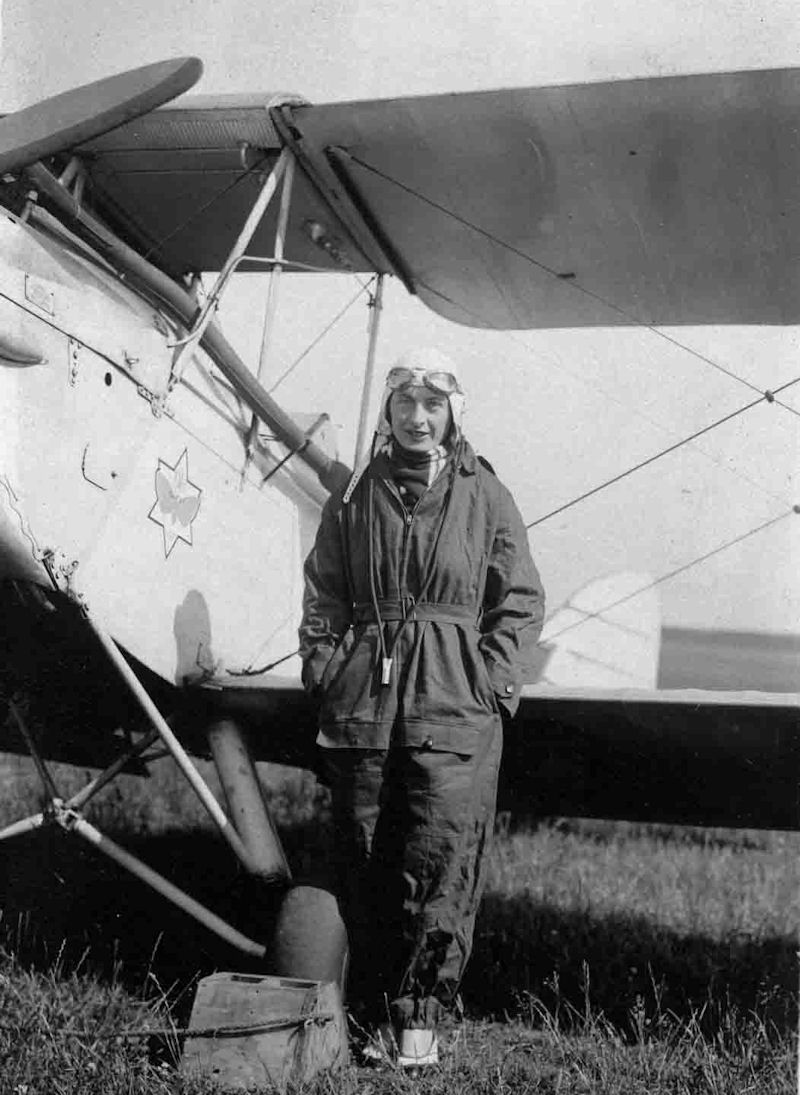
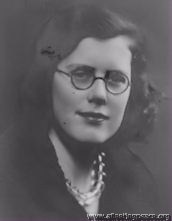

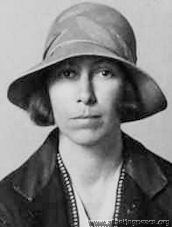
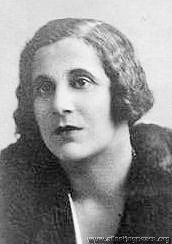
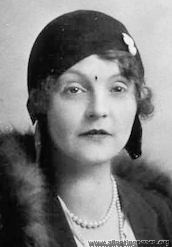
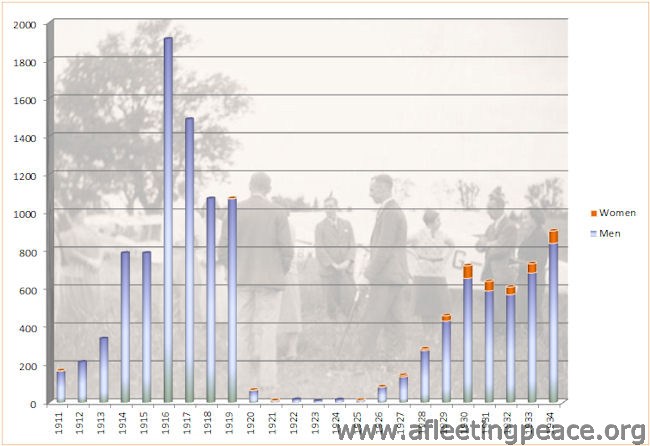

 in 1911, aged 47
in 1911, aged 47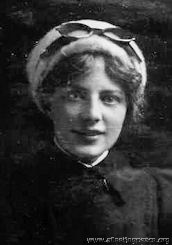 1911, aged 24
1911, aged 24
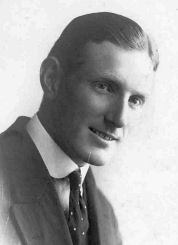 ) crashed at Hendon; they were both taken from the wreckage unconscious and sent off to the nearby Central London Sick Asylum. Sydney had a crushed foot, fractured thigh and abdominal wounds; Cheridah was in a 'semi-conscious state' for weeks, [I know the feeling], but eventually recovered. Her struggle to recover and walk again was "closely followed by the newspapers".
) crashed at Hendon; they were both taken from the wreckage unconscious and sent off to the nearby Central London Sick Asylum. Sydney had a crushed foot, fractured thigh and abdominal wounds; Cheridah was in a 'semi-conscious state' for weeks, [I know the feeling], but eventually recovered. Her struggle to recover and walk again was "closely followed by the newspapers".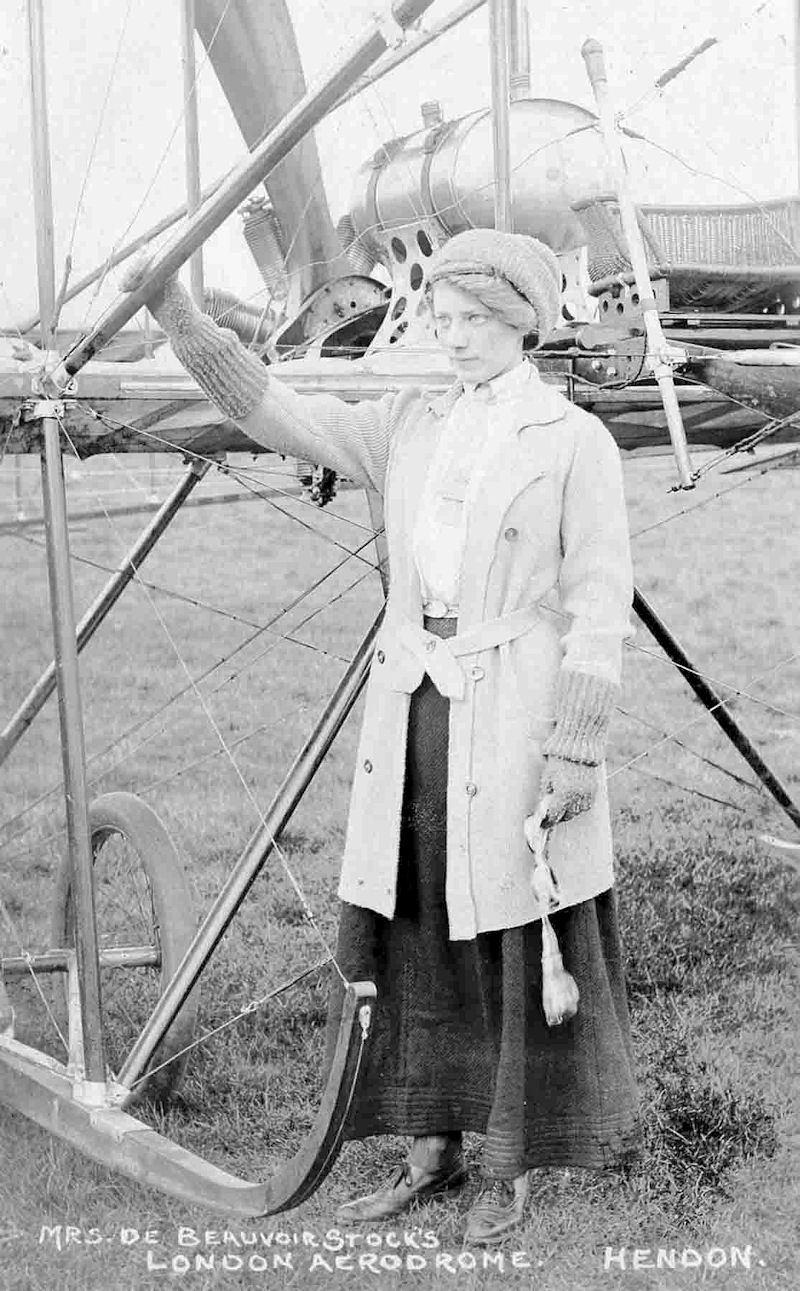

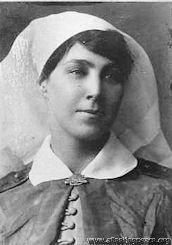
.jpg)
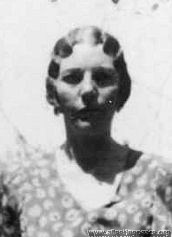
 in June 1920, aged 23
in June 1920, aged 23 1922
1922 in 1925
in 1925
 1926, aged 39
1926, aged 39


 www.monaghan.ie/museum
www.monaghan.ie/museum Throttle Full Open
Throttle Full Open

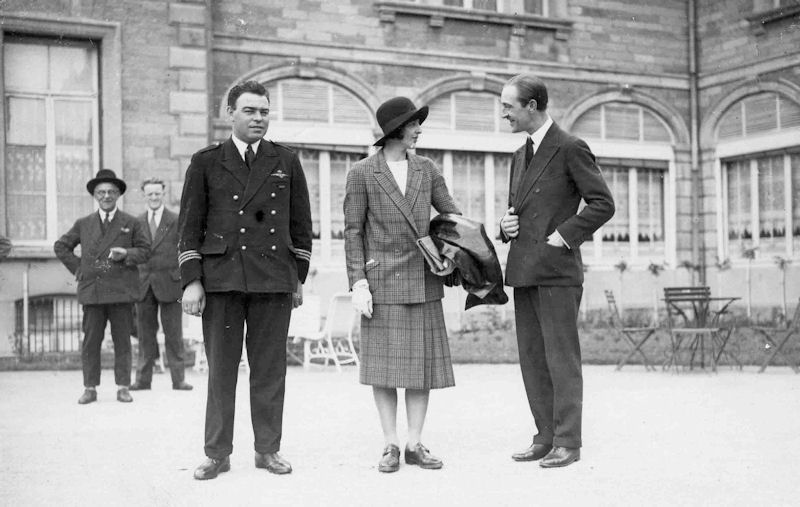

 in 1927, aged 24
in 1927, aged 24



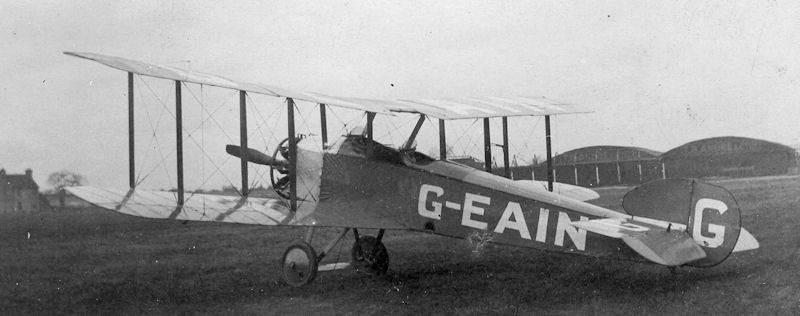 RAeC
RAeC 1927
1927 photo: 1927, aged 28
photo: 1927, aged 28 .jpg)
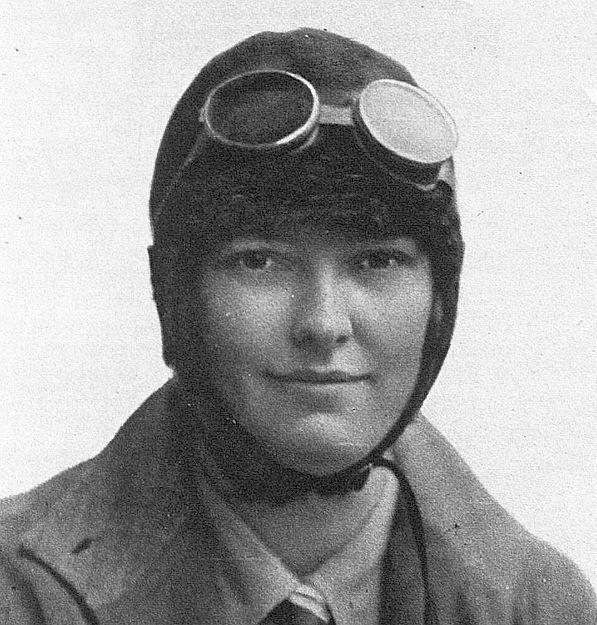 "A Well-known English Pilot" - The Sketch, 1929
"A Well-known English Pilot" - The Sketch, 1929.jpg)




.jpg)

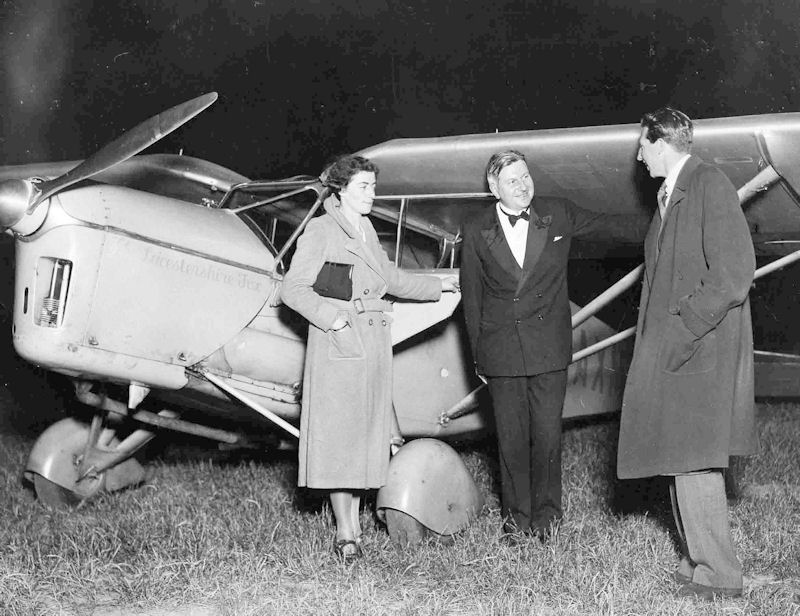


 1927
1927



.jpg)
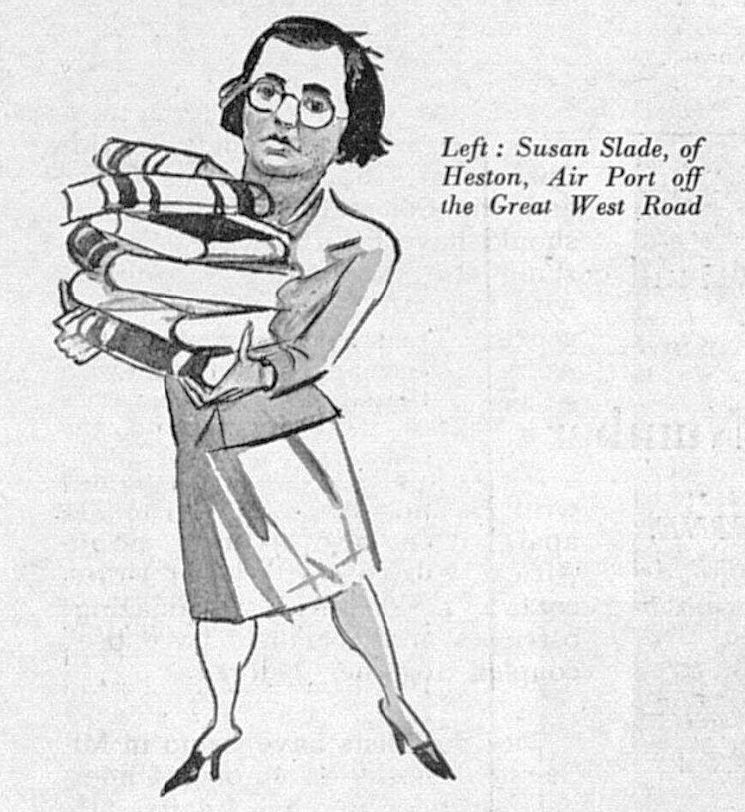
 The Sketch - October 1929
The Sketch - October 1929.jpg)
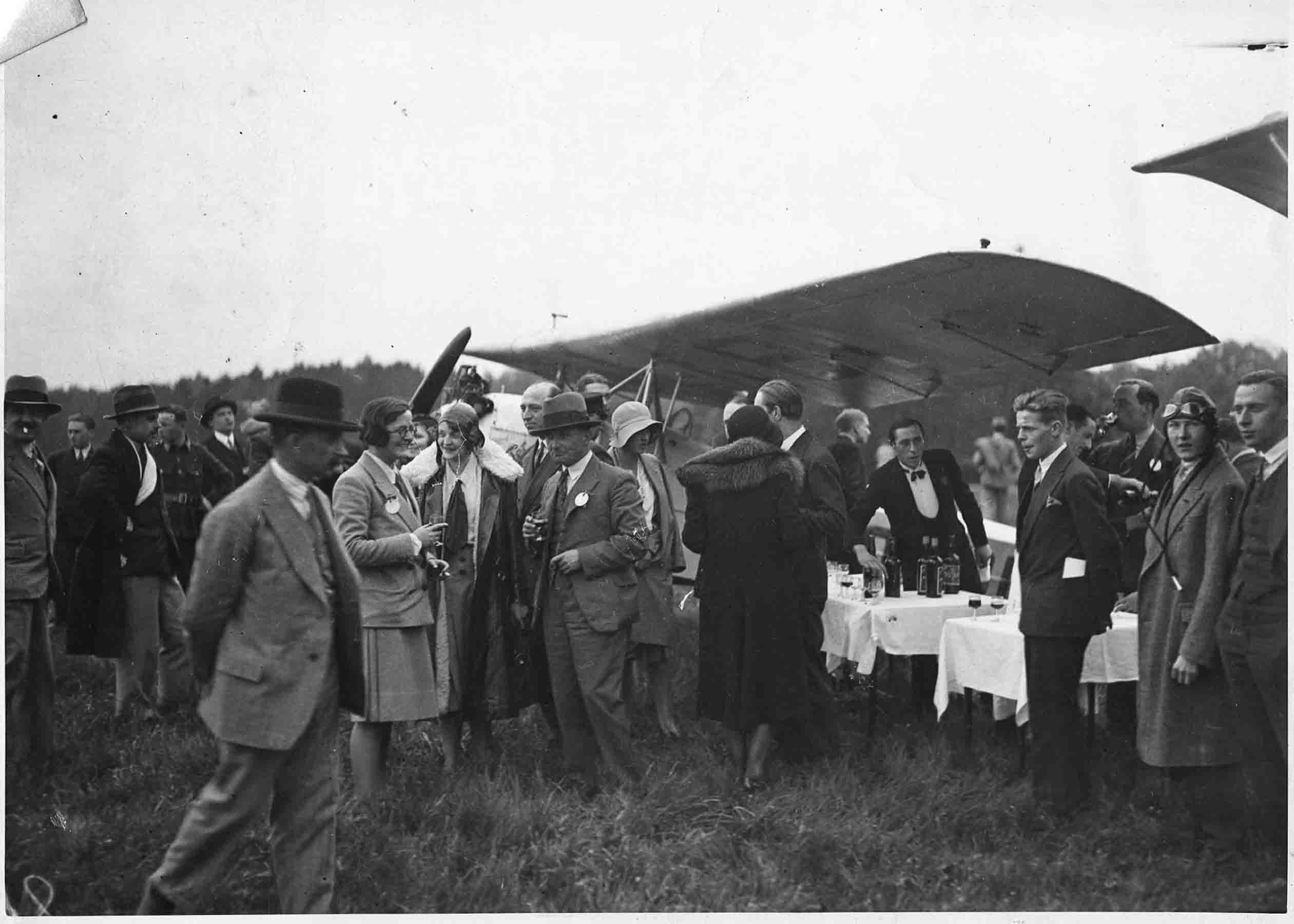

 1928
1928 1928
1928 1928
1928
 1928
1928
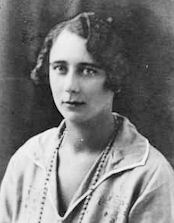 1929
1929
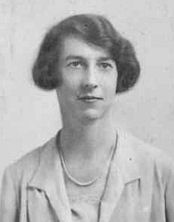 1929, aged 43
1929, aged 43
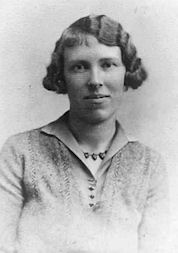

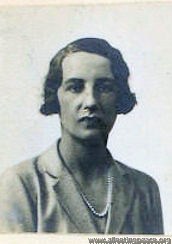
 King's Cup 1933
King's Cup 1933


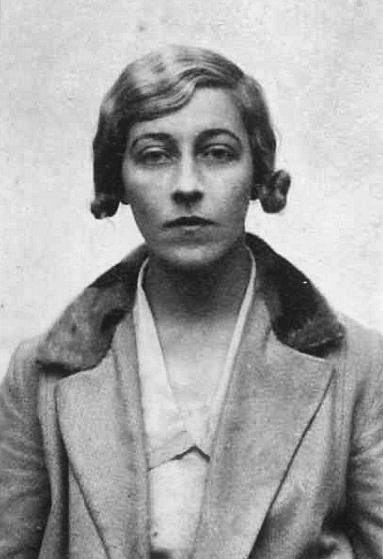 1929
1929
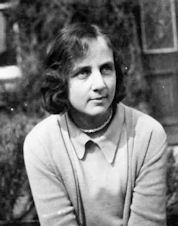
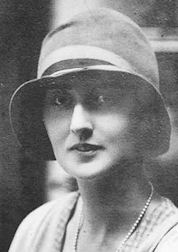



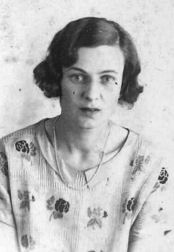


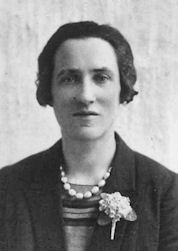




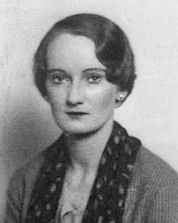
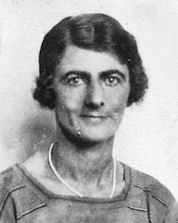


 1929
1929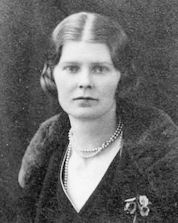
 Ancestry
Ancestry




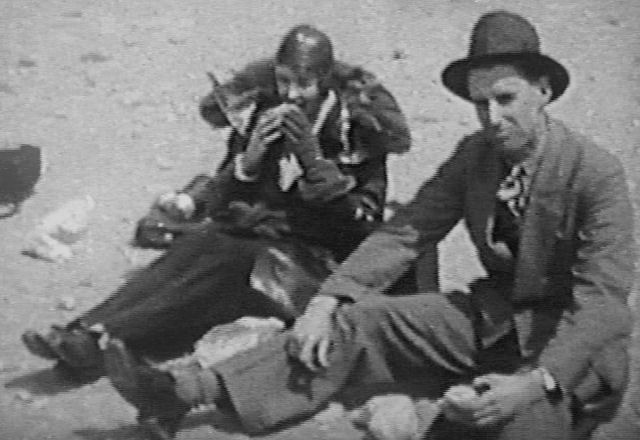
 in 1930
in 1930 photo: 1931, aged 39
photo: 1931, aged 39 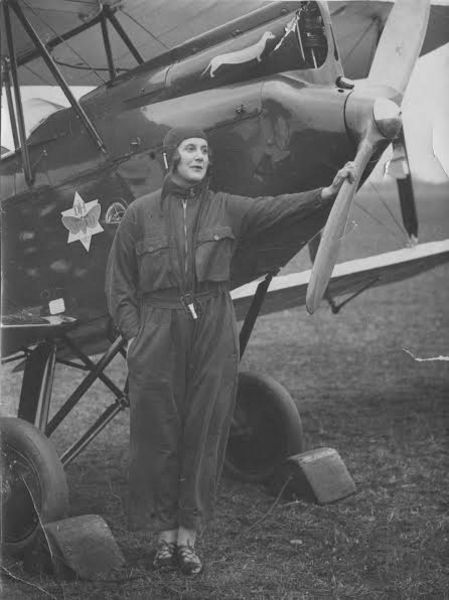
 in 1931
in 1931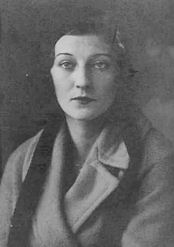

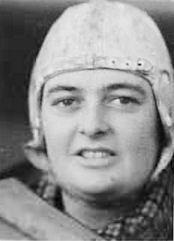

 in 1933
in 1933 in 1935
in 1935 RAeC 1937
RAeC 1937 FAI 1939
FAI 1939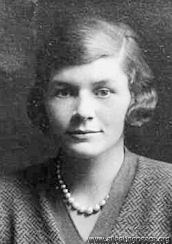 1930
1930
 1932
1932 1930
1930 Ruth C (l) and Ruth L (r) ('Flight')
Ruth C (l) and Ruth L (r) ('Flight')
 1936
1936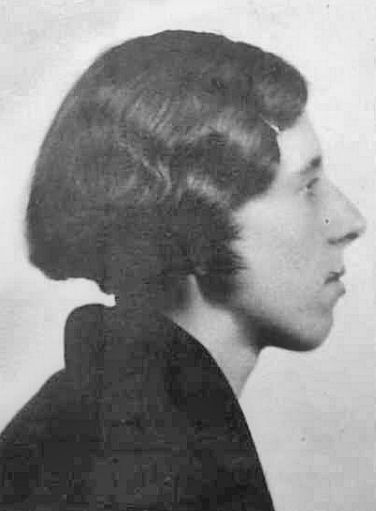 RAeC 1933
RAeC 1933 1938
1938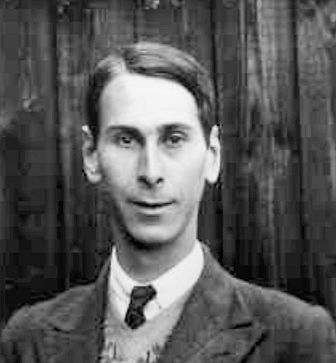 1934
1934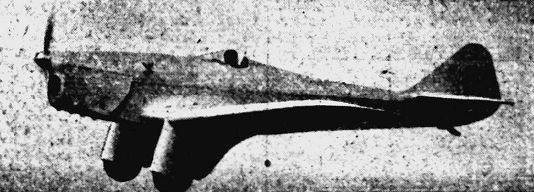 G-ADNL in 1938
G-ADNL in 1938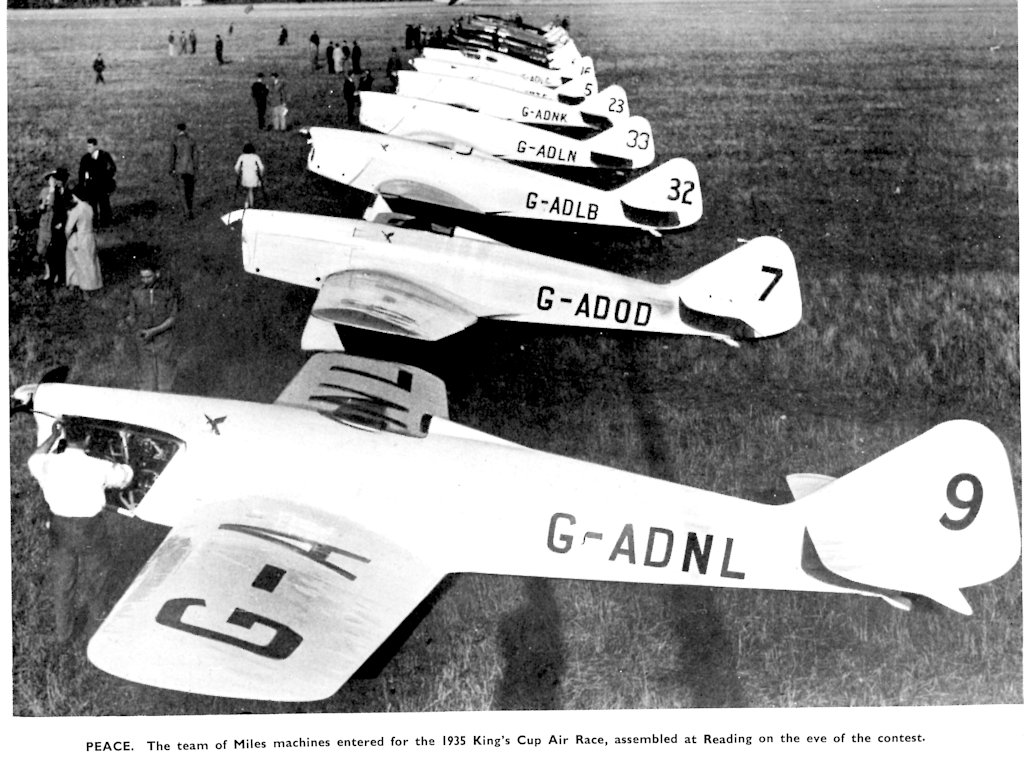 G-ADNL in 1935
G-ADNL in 1935

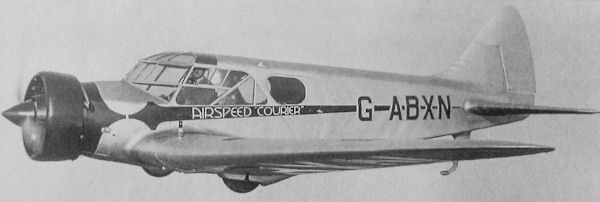

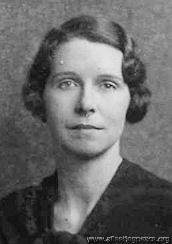 1934
1934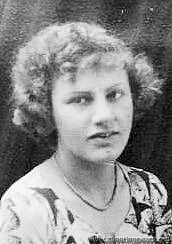 1935
1935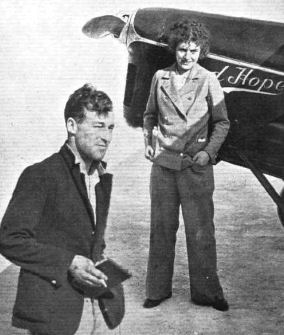
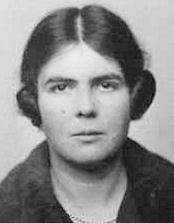 1930
1930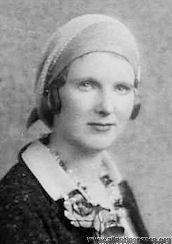 RAeC 9126
RAeC 9126

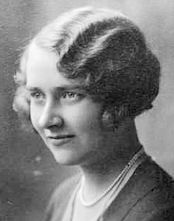 1930
1930.jpg) 1931
1931 bought an Avro Club Cadet (G-ACHW) in June 1933,
bought an Avro Club Cadet (G-ACHW) in June 1933, Doreen (r) with V Smith and the Cadet in 1935 - Northampton Mercury
Doreen (r) with V Smith and the Cadet in 1935 - Northampton Mercury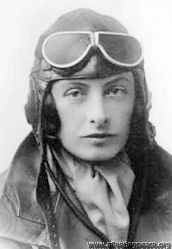 Lady G-AAGA
Lady G-AAGA